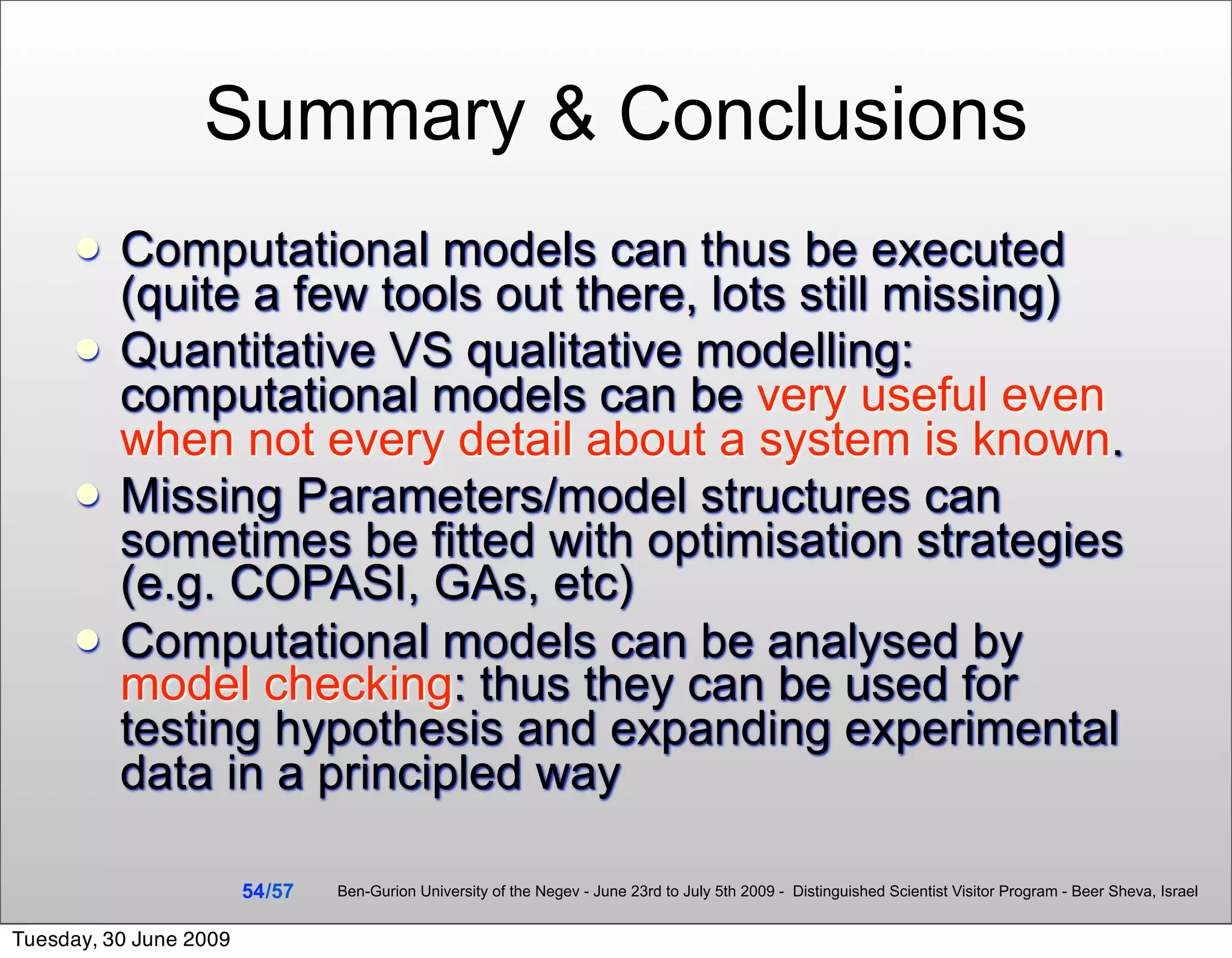The document discusses the creation of executable biological models using computational techniques in synthetic biology, presenting an overview of modeling approaches and methodologies. It highlights the integration of computer science, engineering, and mathematics in designing artificial biological systems and emphasizes the importance of rigorous model development processes. Additionally, it explores automated model synthesis and optimization as critical strategies for advancing the field of systems biology.
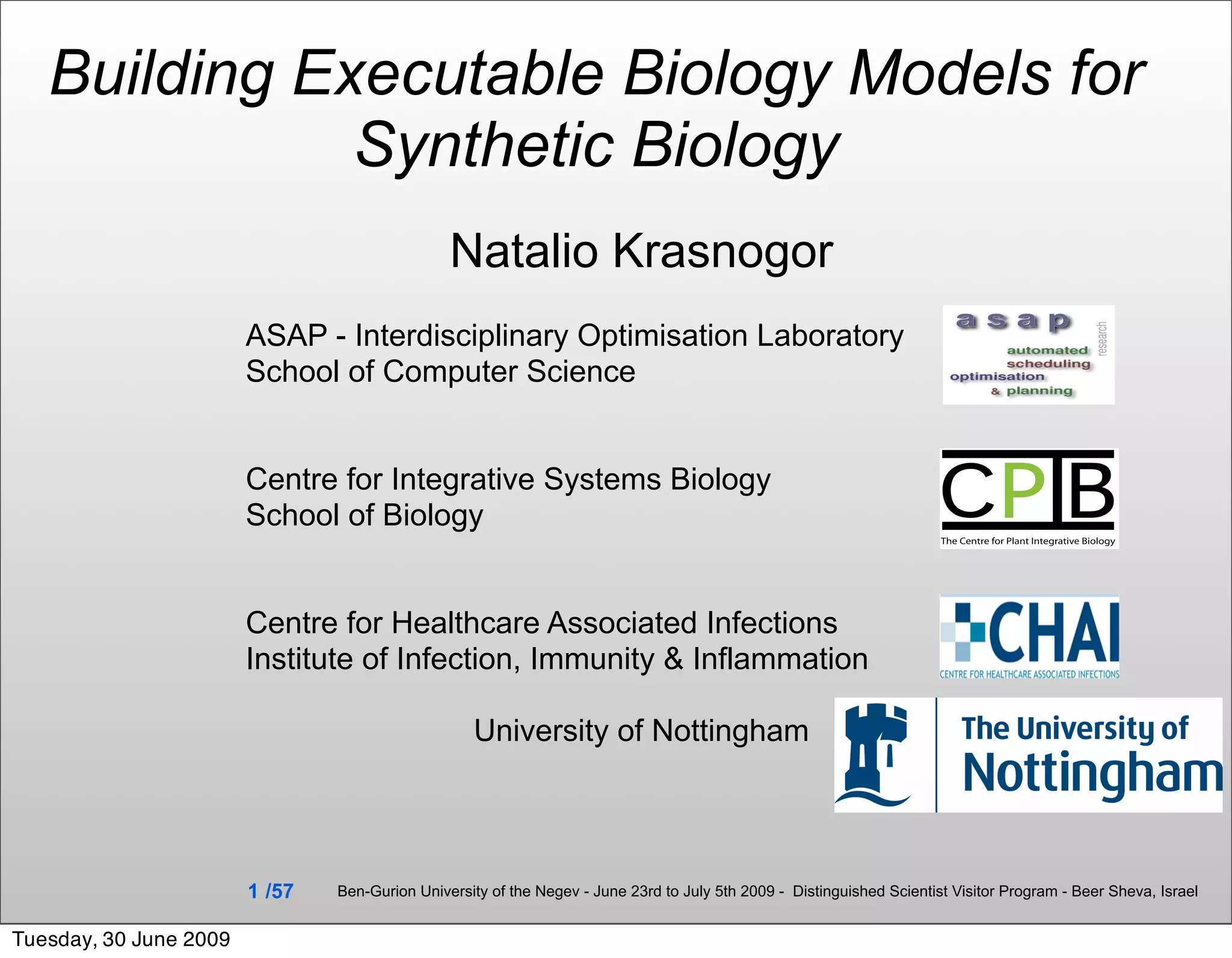
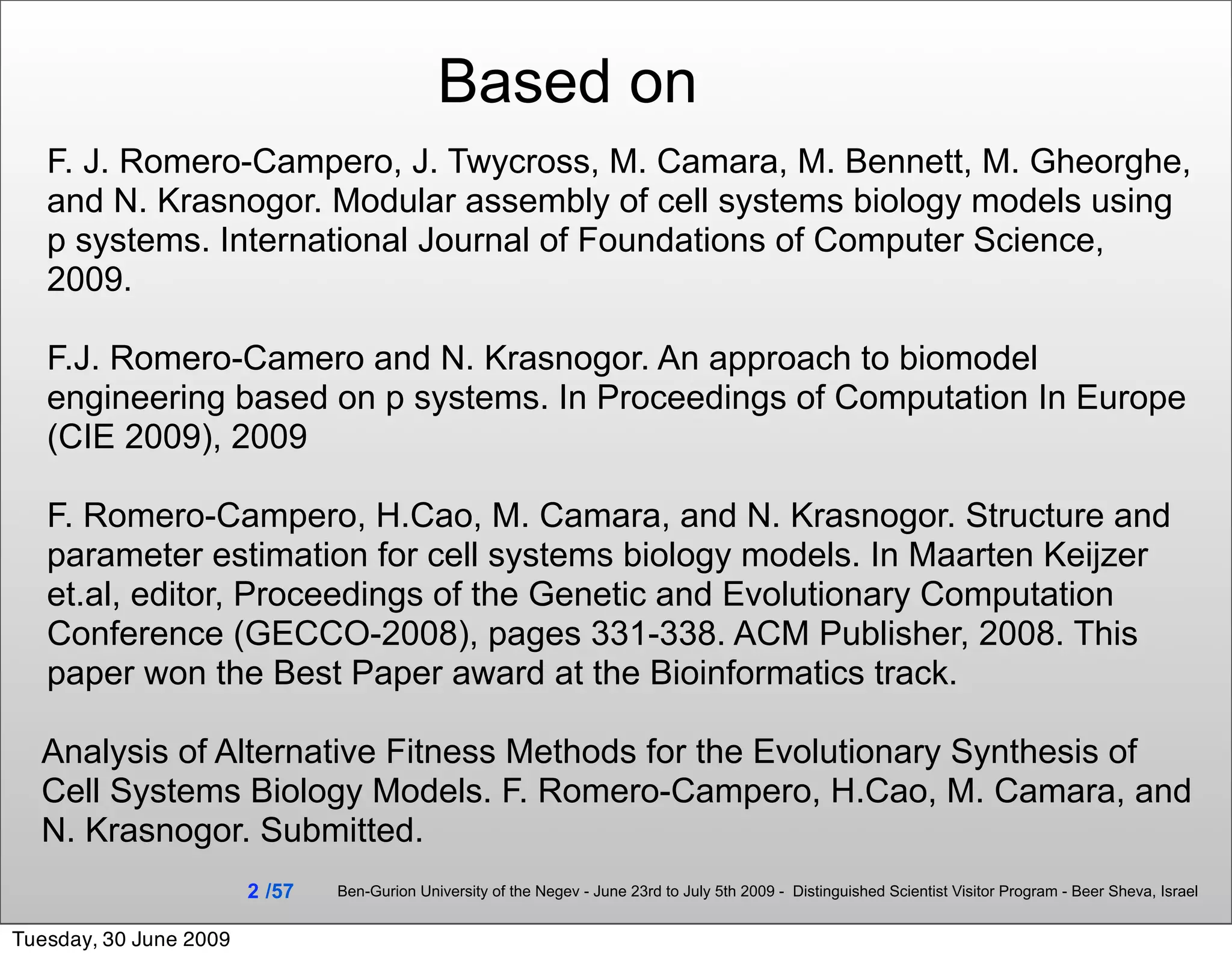

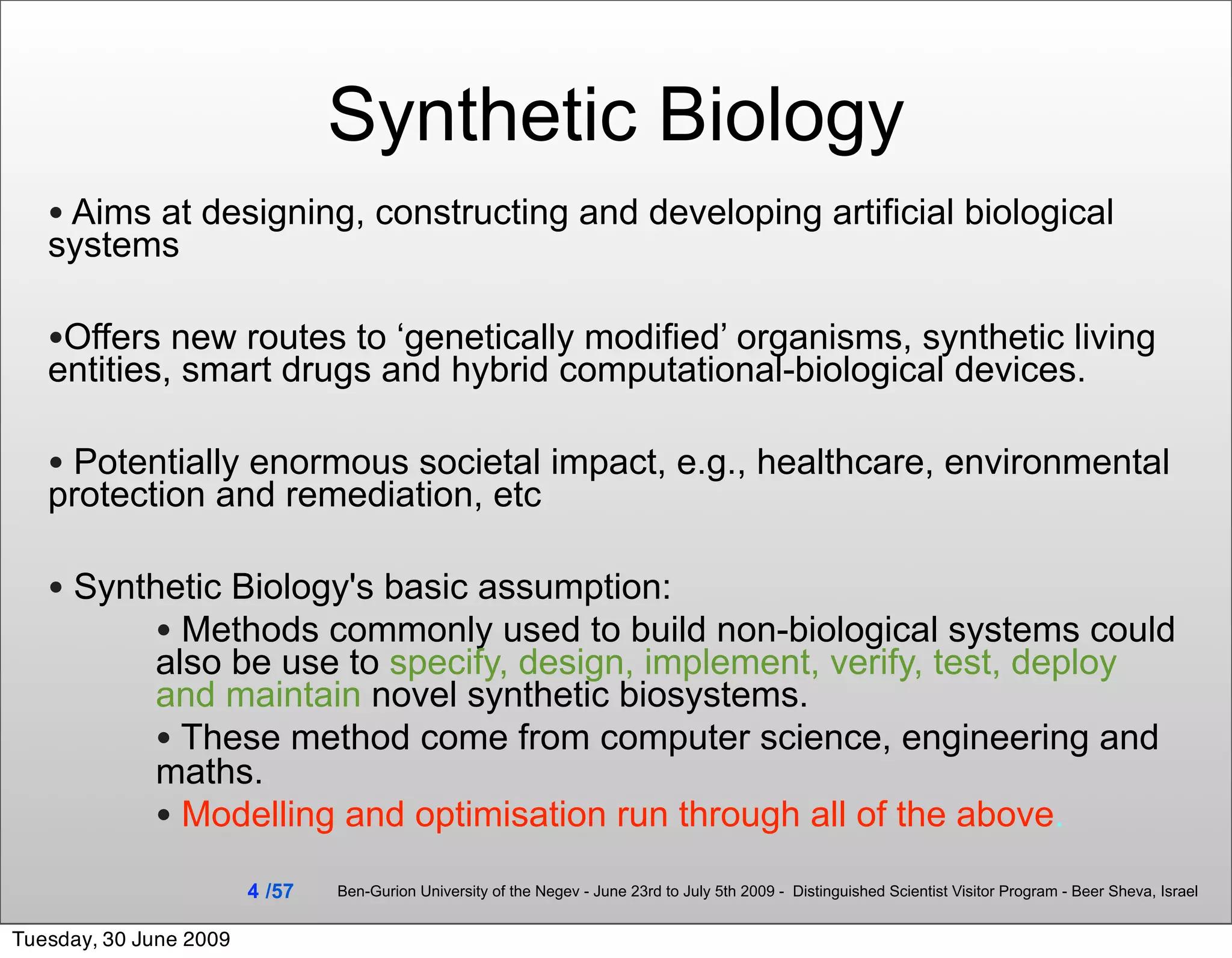
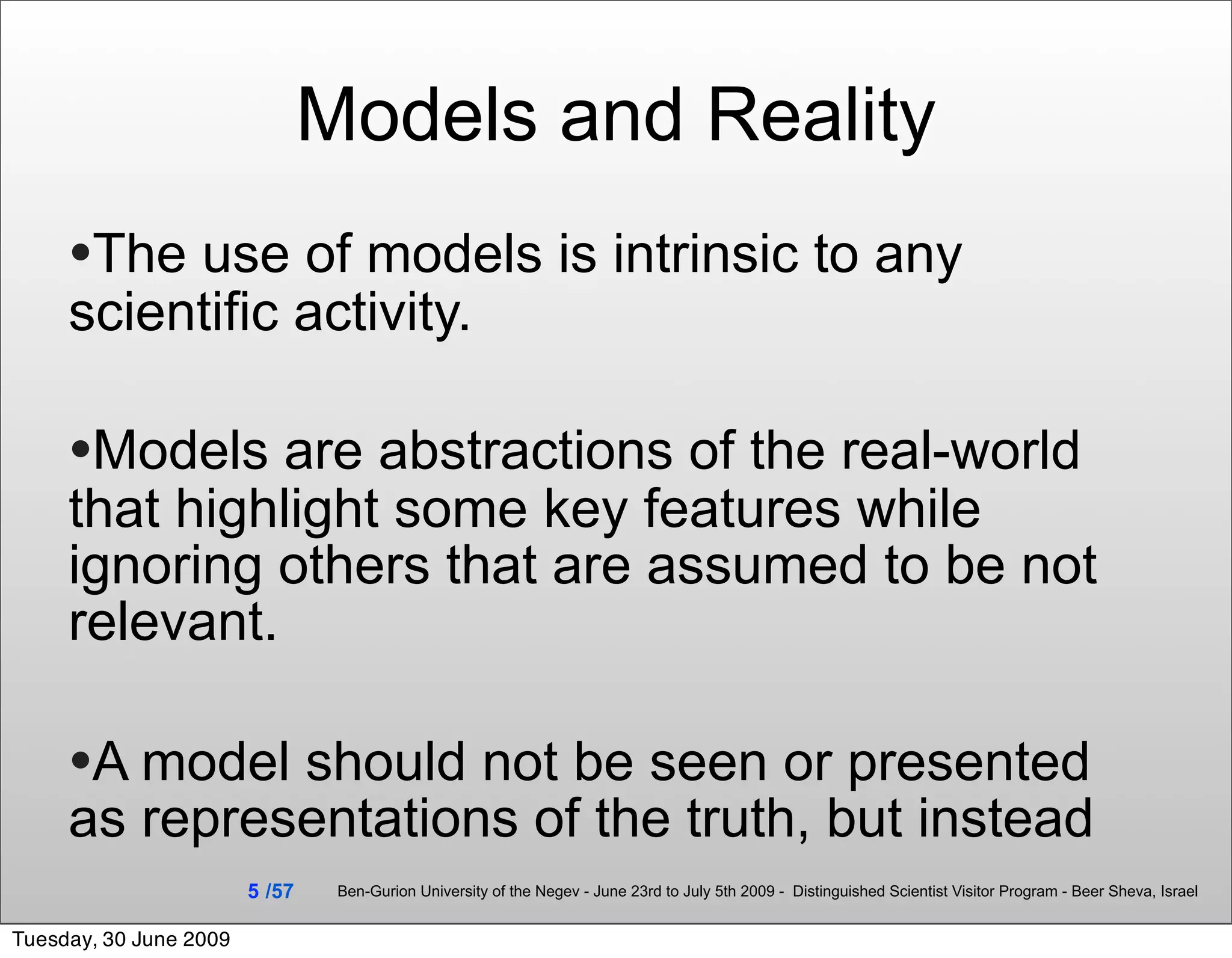
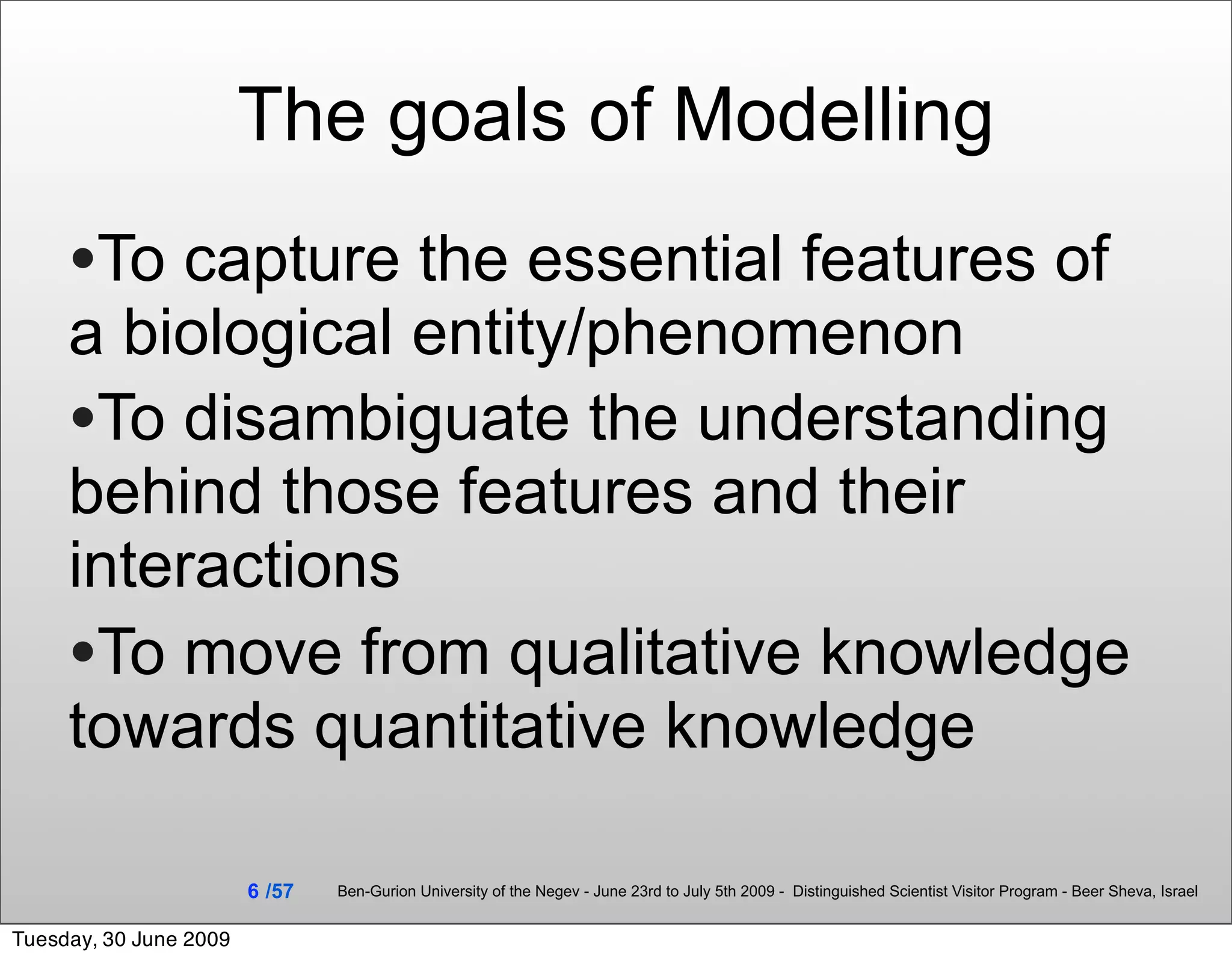
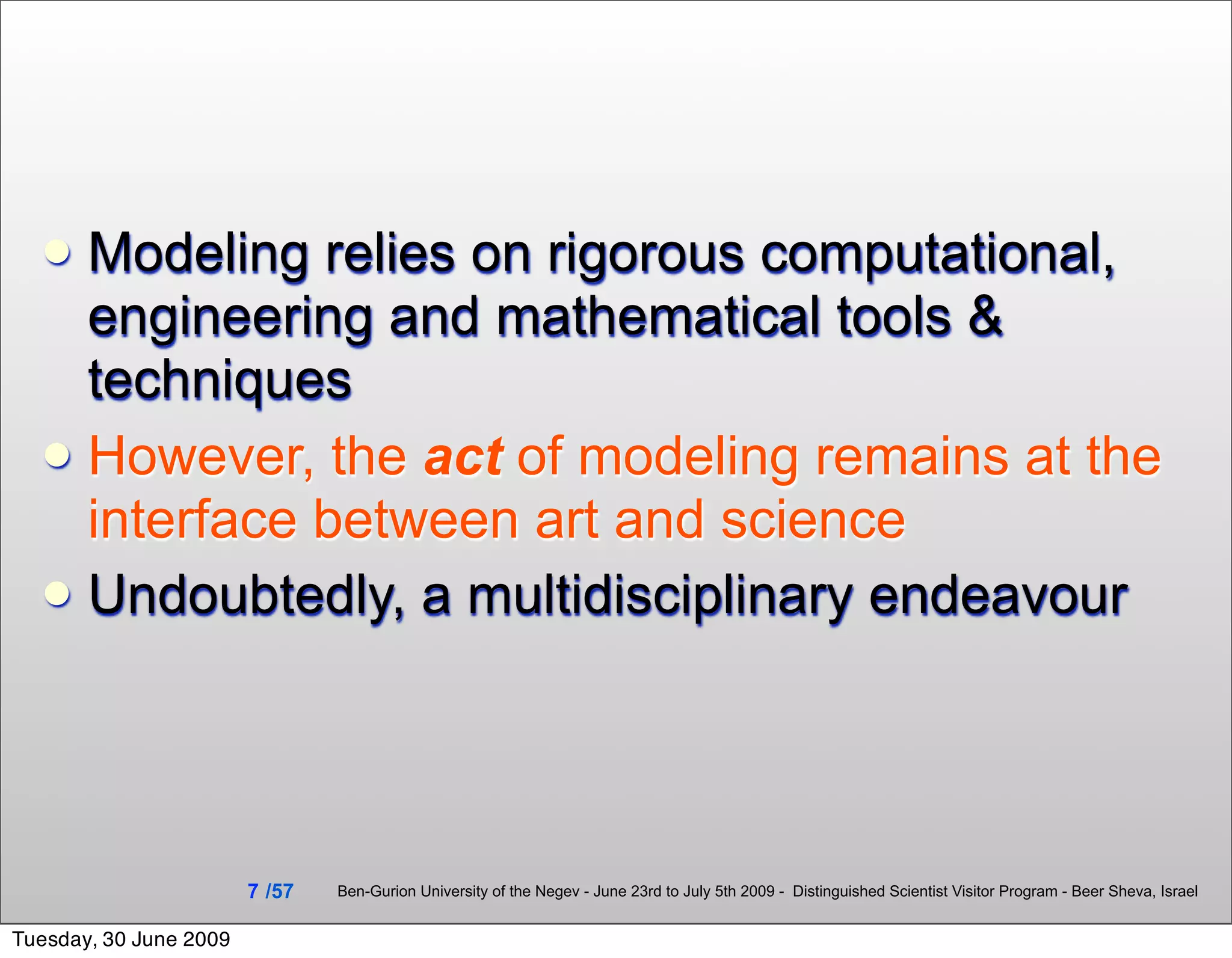
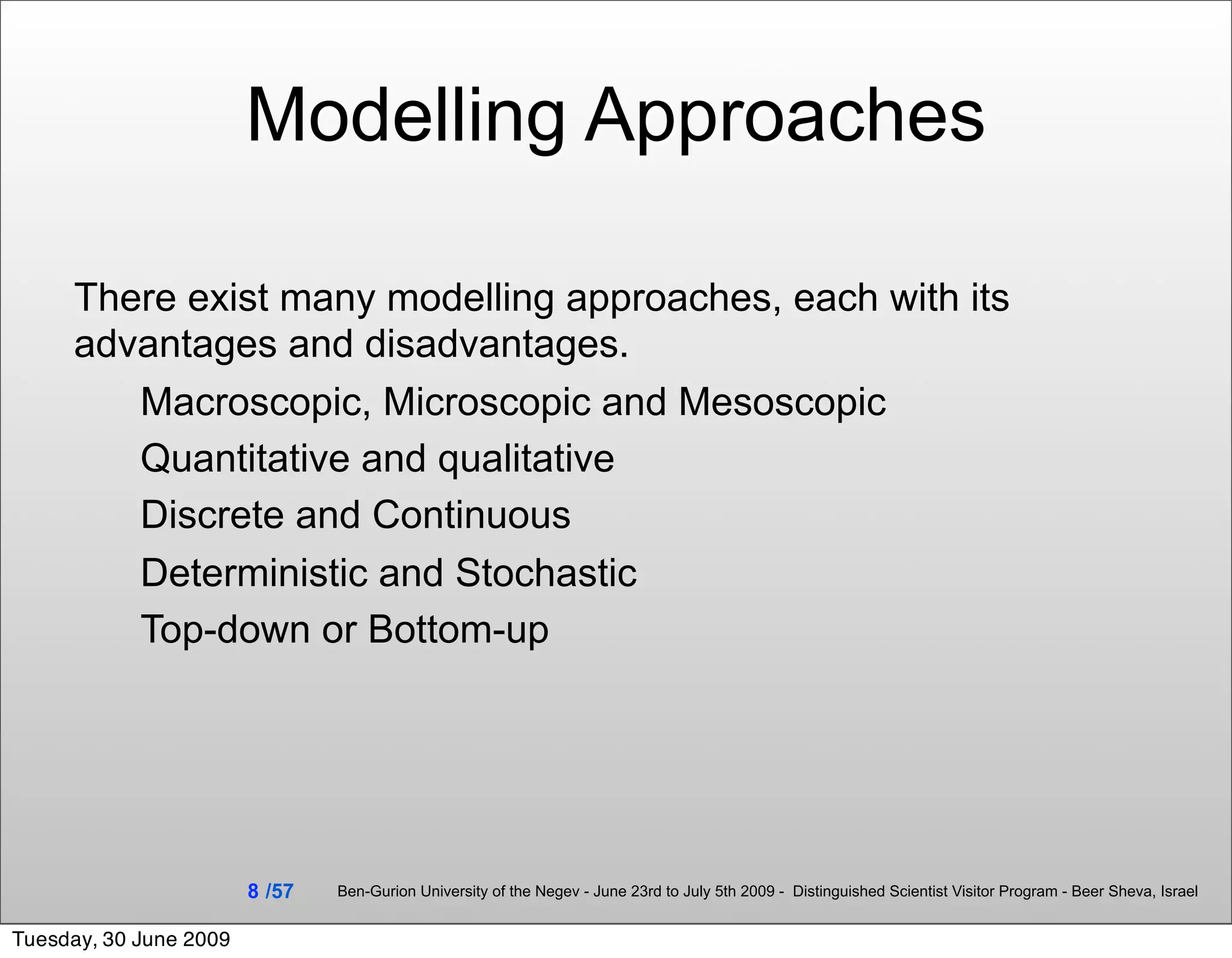
![Tools Suitability and Cost
From [D.E Goldberg, 2002] (adapted):
“Since science and math are in the description
business, the model is the thing…The engineer
or inventor has much different motives. The
engineered object is the thing” ε, error
Synthetic Biologist
Computer Scientist/Mathematician
C, cost of modelling
9 /57 Ben-Gurion University of the Negev - June 23rd to July 5th 2009 - Distinguished Scientist Visitor Program - Beer Sheva, Israel
Tuesday, 30 June 2009](https://image.slidesharecdn.com/bucscolloquium-090630095157-phpapp02/75/Building-Executable-Biology-Models-for-Synthetic-Biology-9-2048.jpg)
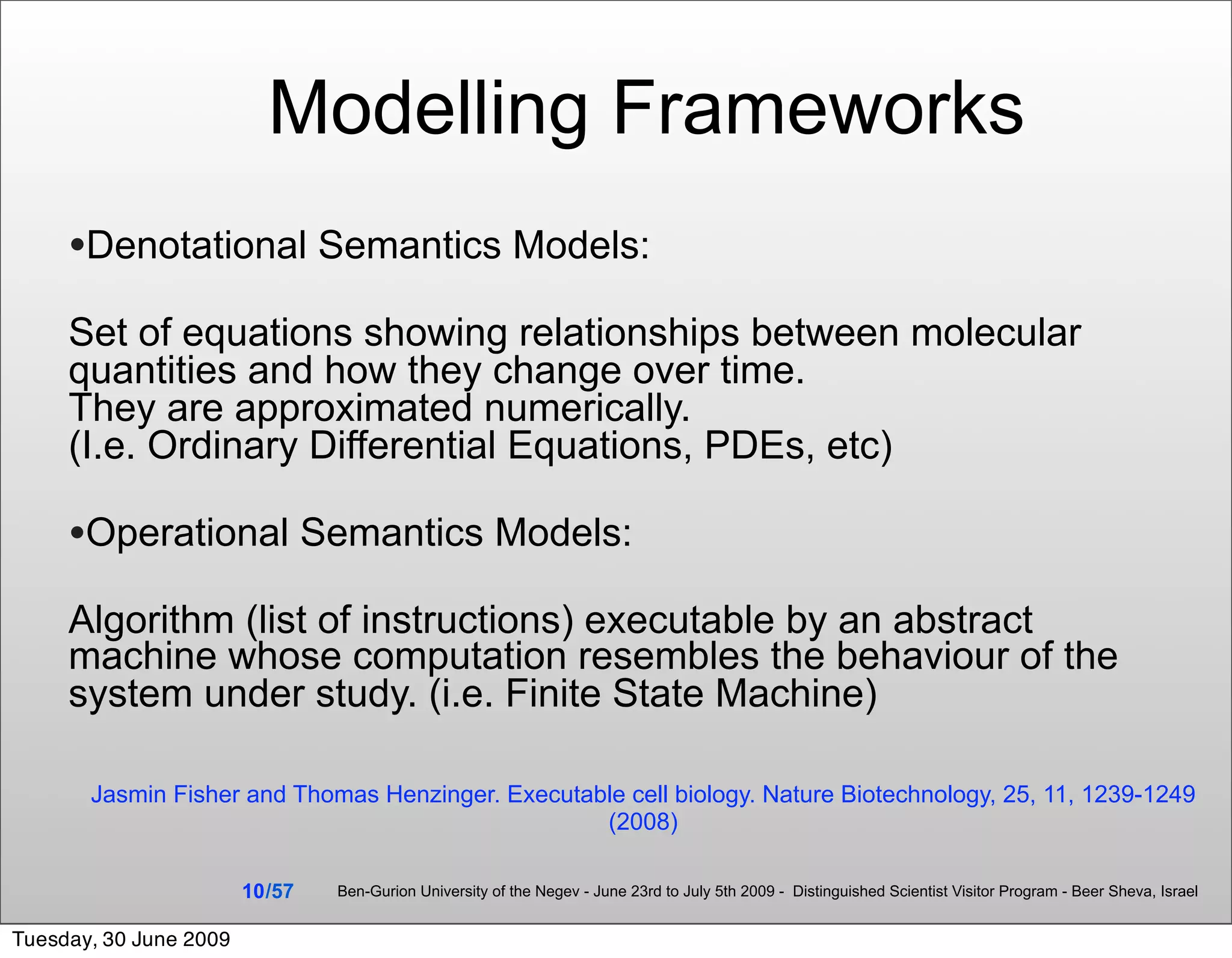
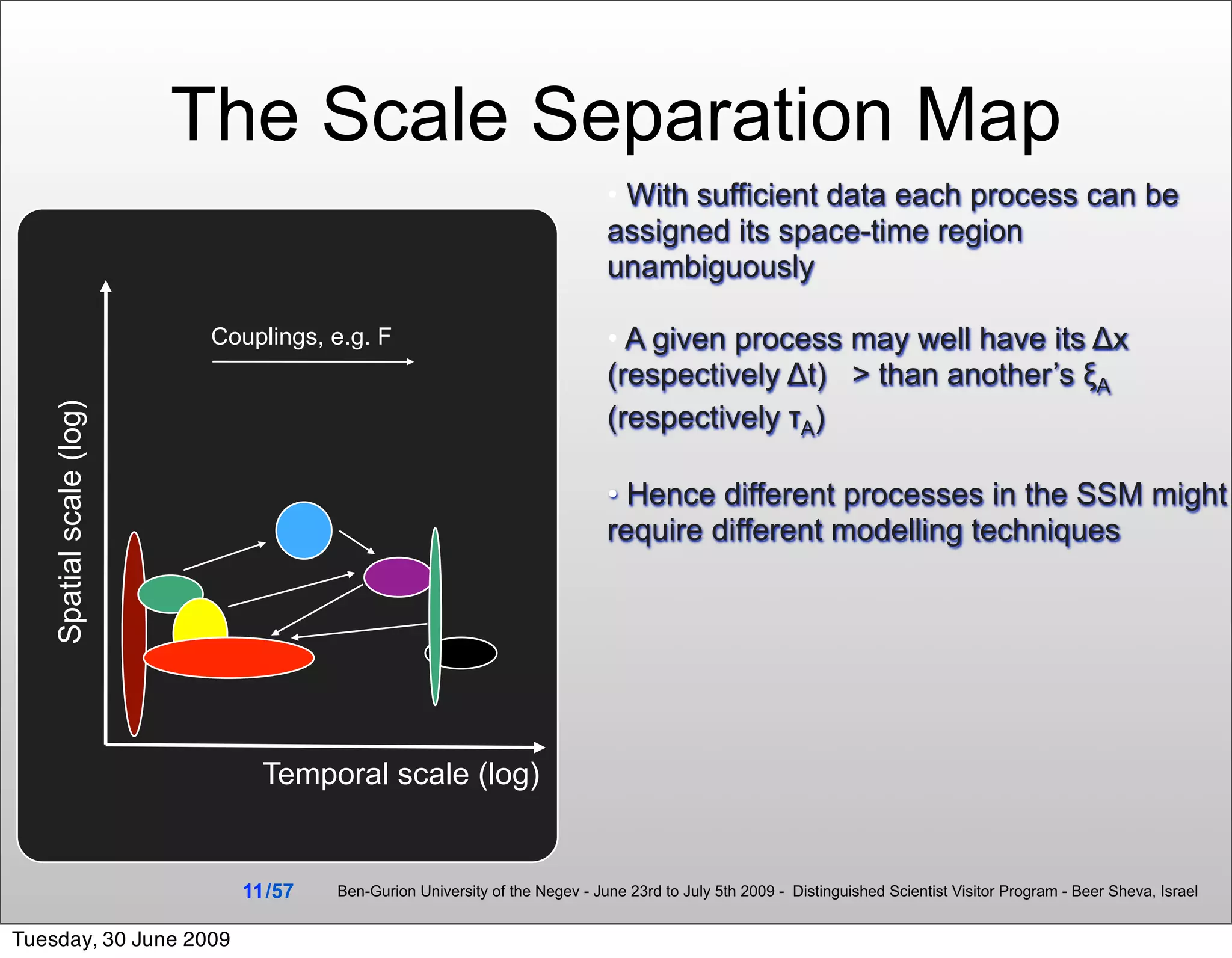
![Even within a single cell the space & time
scale separations are important
E.g.:
• Within a cell the dissociation
constants of DNA/ transcription
factor binding to specific/non-
specific sites differ by 4-6 orders of
magnitude
• DNA protein binding occurs at 1-10s
time scale very fast in comparison
to a cell’s life cycle.
[F.J. Romero Campero, 2007]
12 /57 Ben-Gurion University of the Negev - June 23rd to July 5th 2009 - Distinguished Scientist Visitor Program - Beer Sheva, Israel
Tuesday, 30 June 2009](https://image.slidesharecdn.com/bucscolloquium-090630095157-phpapp02/75/Building-Executable-Biology-Models-for-Synthetic-Biology-12-2048.jpg)
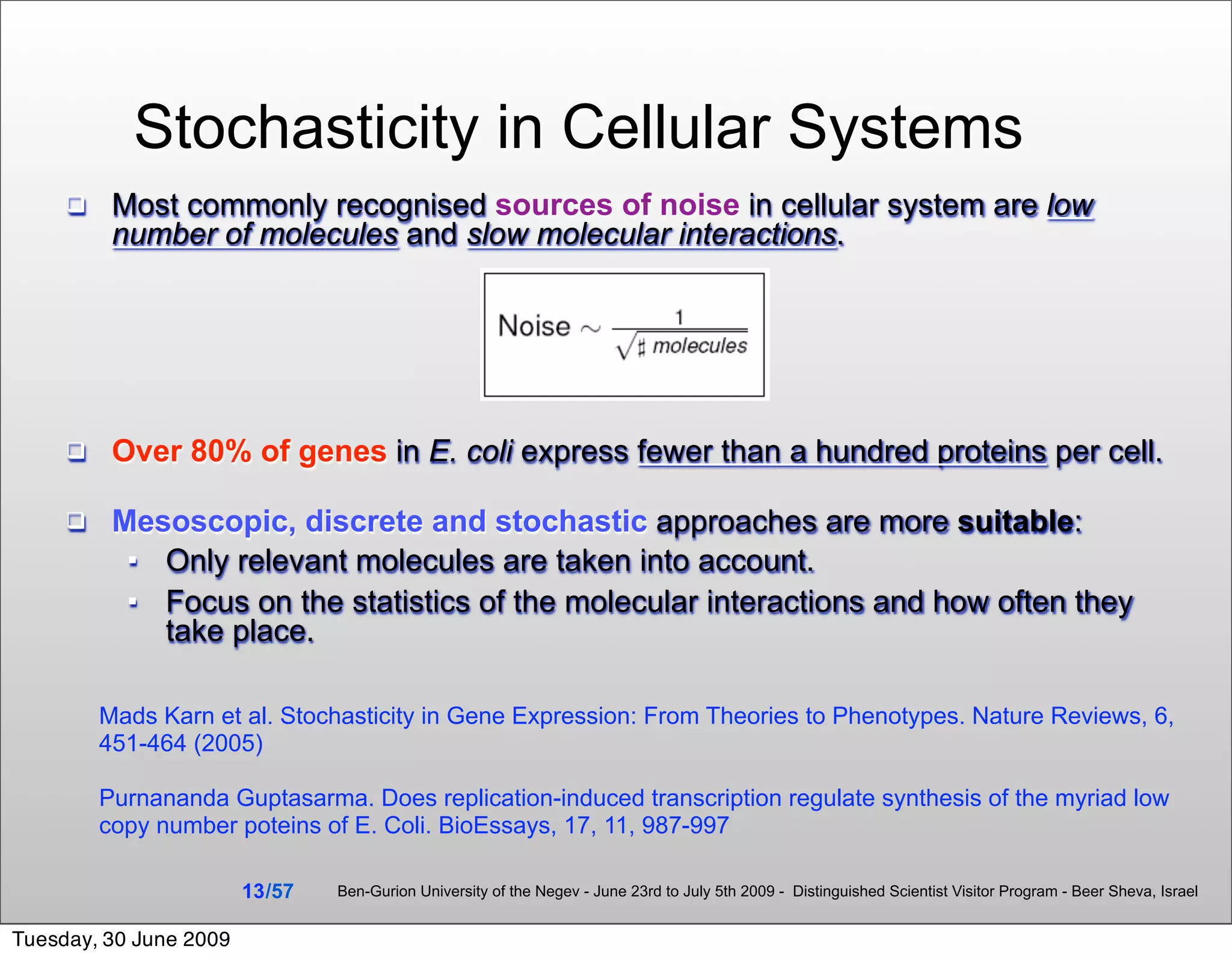

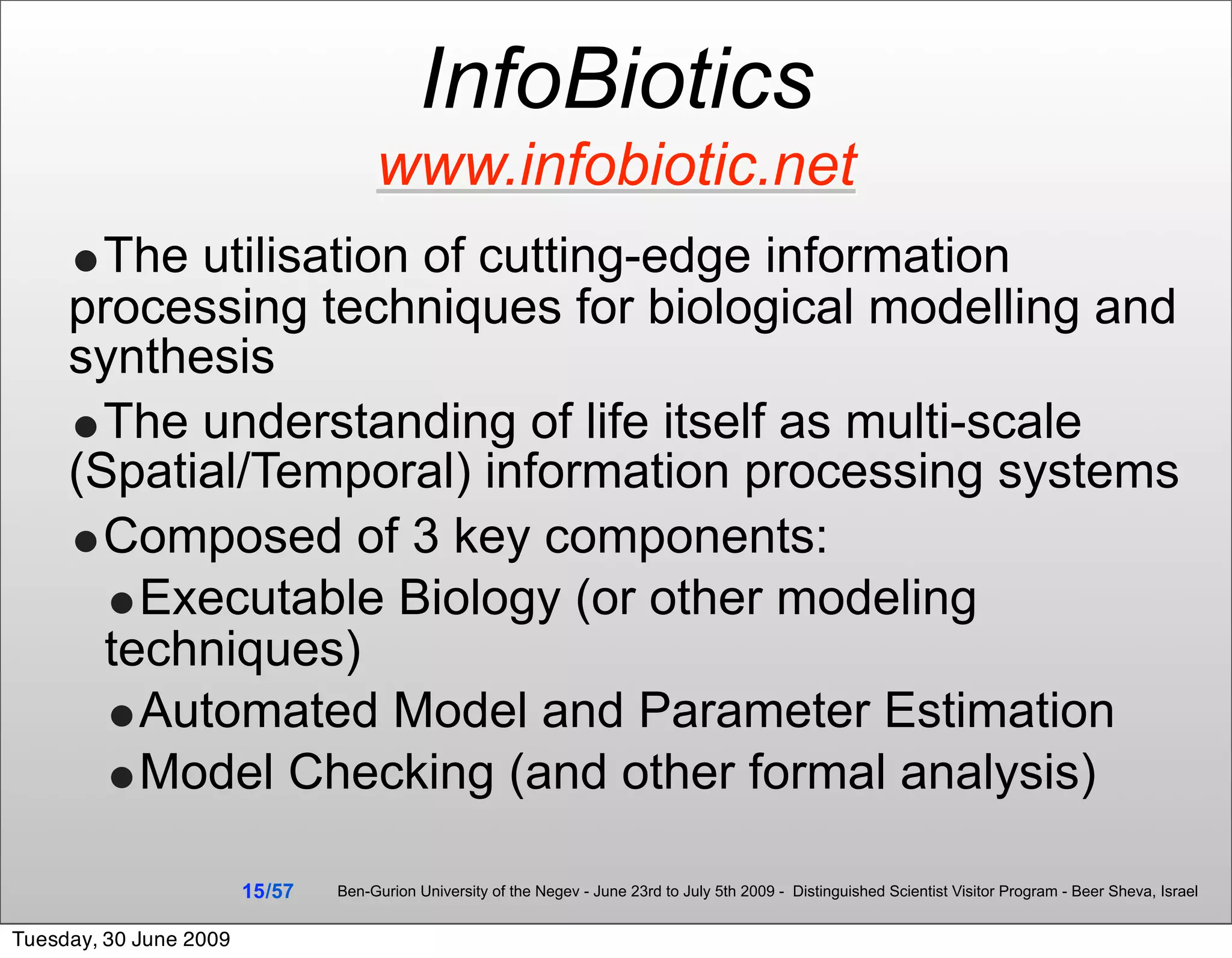
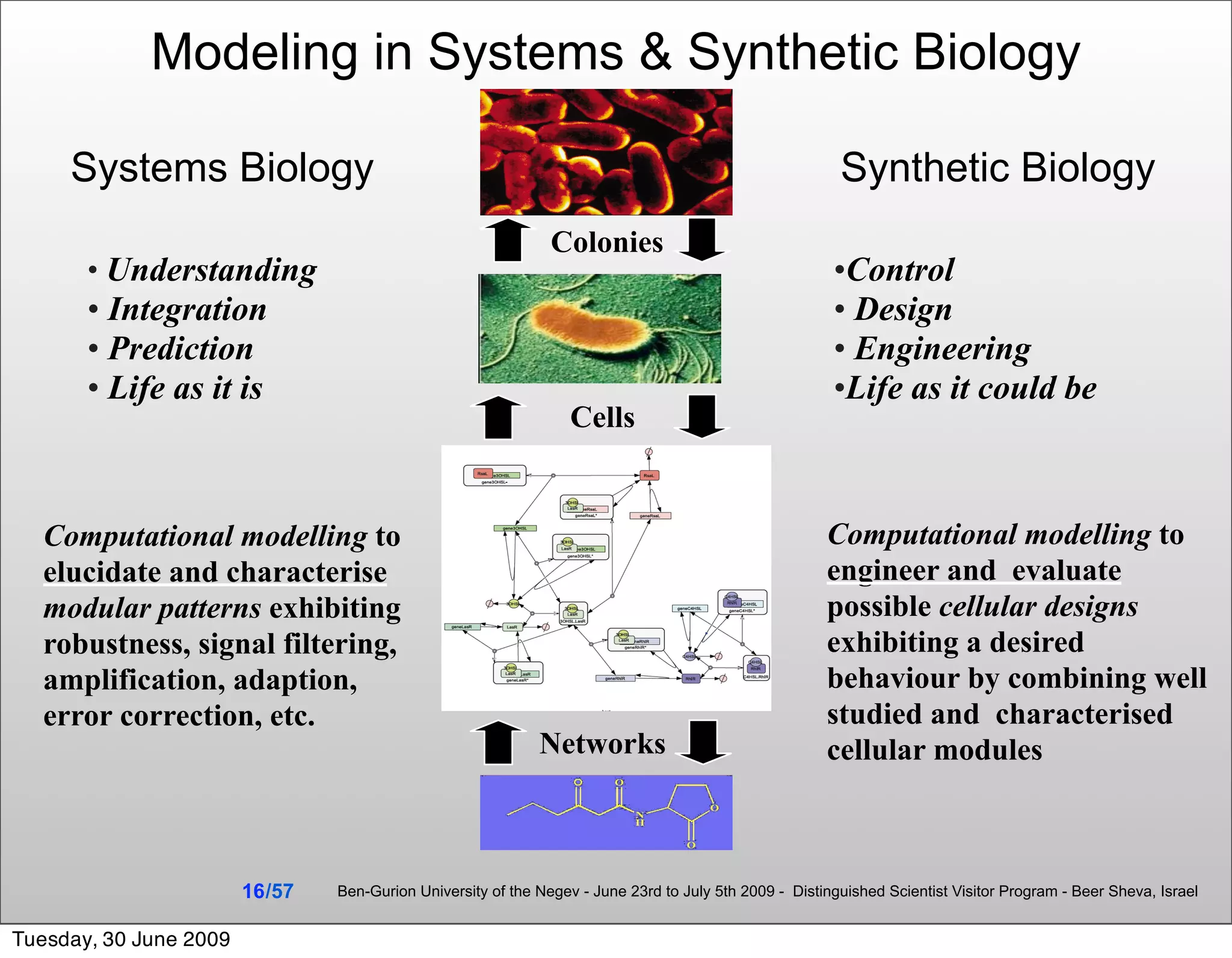
![Model Development
From [E. Klipp et al, Systems Biology in Practice,
2005]
1. Formulation of the problem
2. Verification of available information
3. Selection of model structure
4. Establishing a simple model
5. Sensitivity analysis
6. Experimental tests of the model predictions
7. Stating the agreements and divergences between
experimental and modelling results
8. Iterative refinement of model
17 /57 Ben-Gurion University of the Negev - June 23rd to July 5th 2009 - Distinguished Scientist Visitor Program - Beer Sheva, Israel
Tuesday, 30 June 2009](https://image.slidesharecdn.com/bucscolloquium-090630095157-phpapp02/75/Building-Executable-Biology-Models-for-Synthetic-Biology-17-2048.jpg)
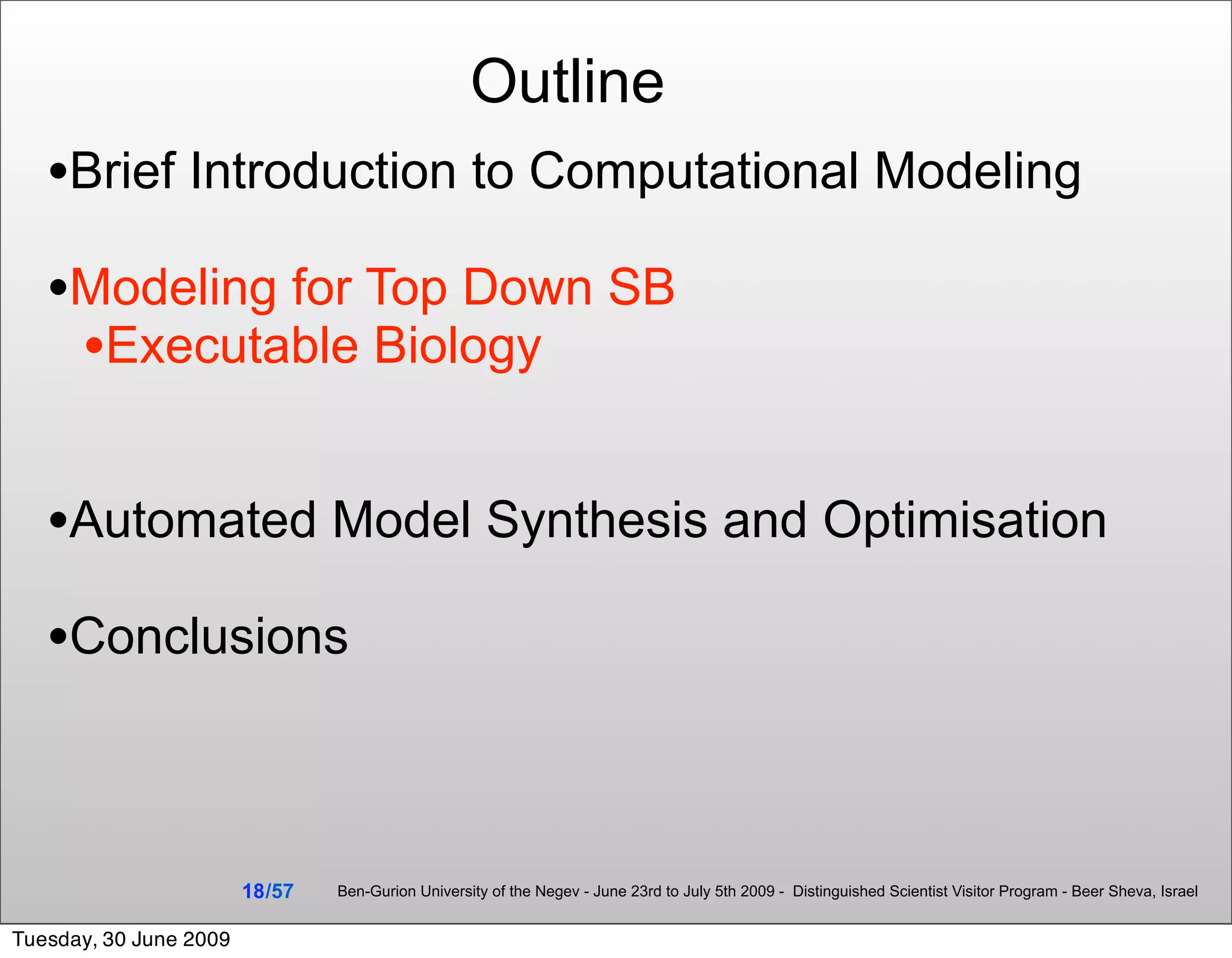
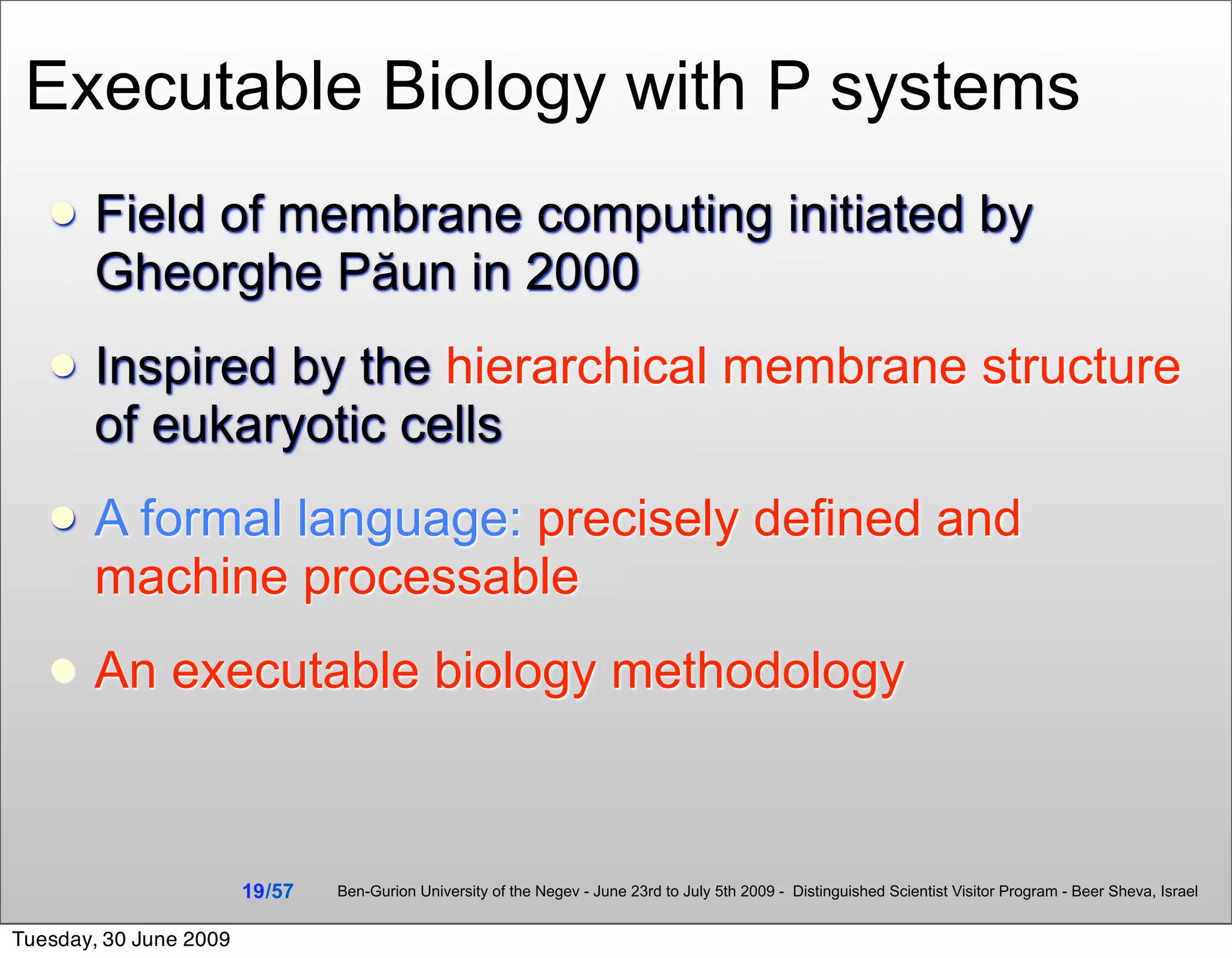
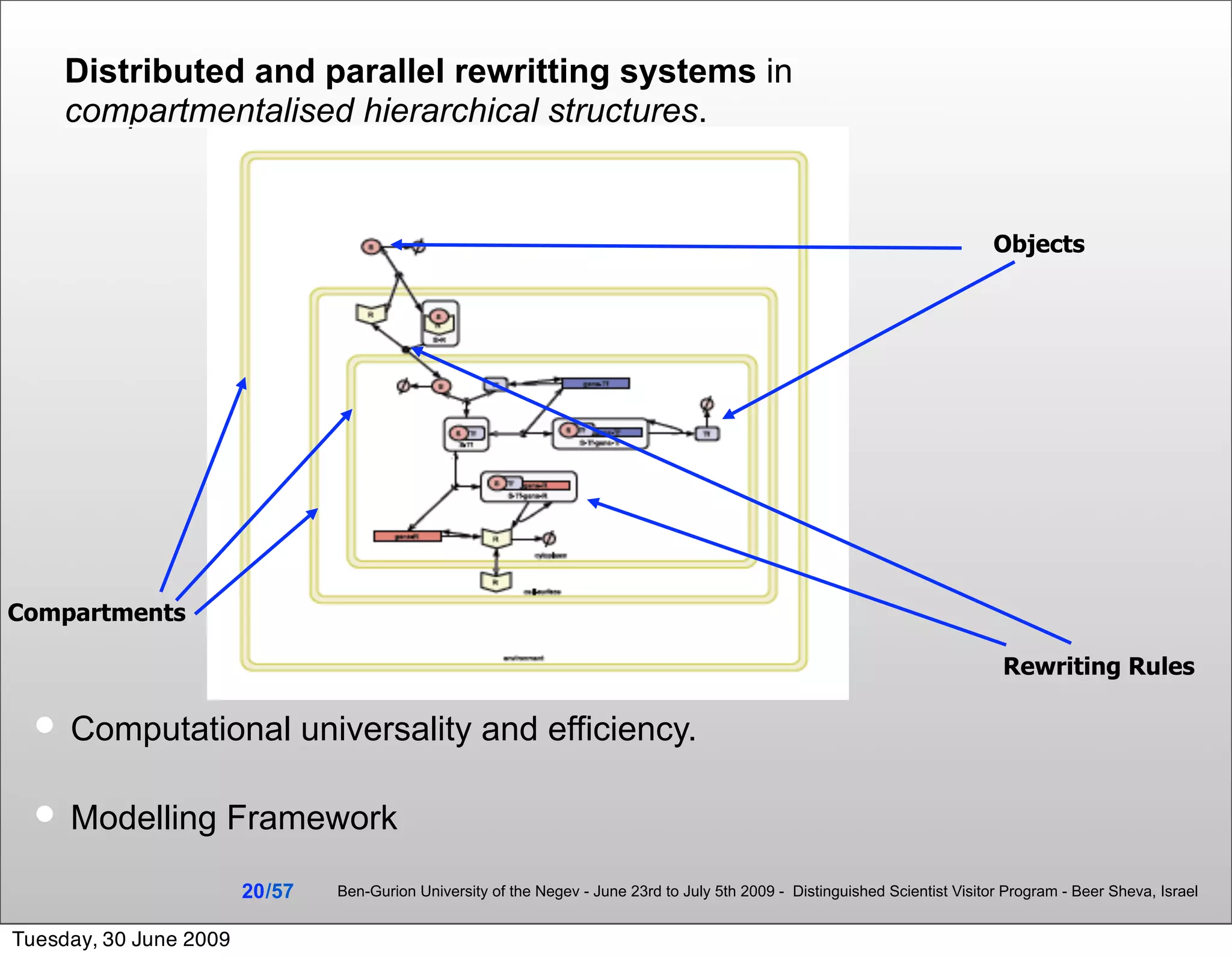
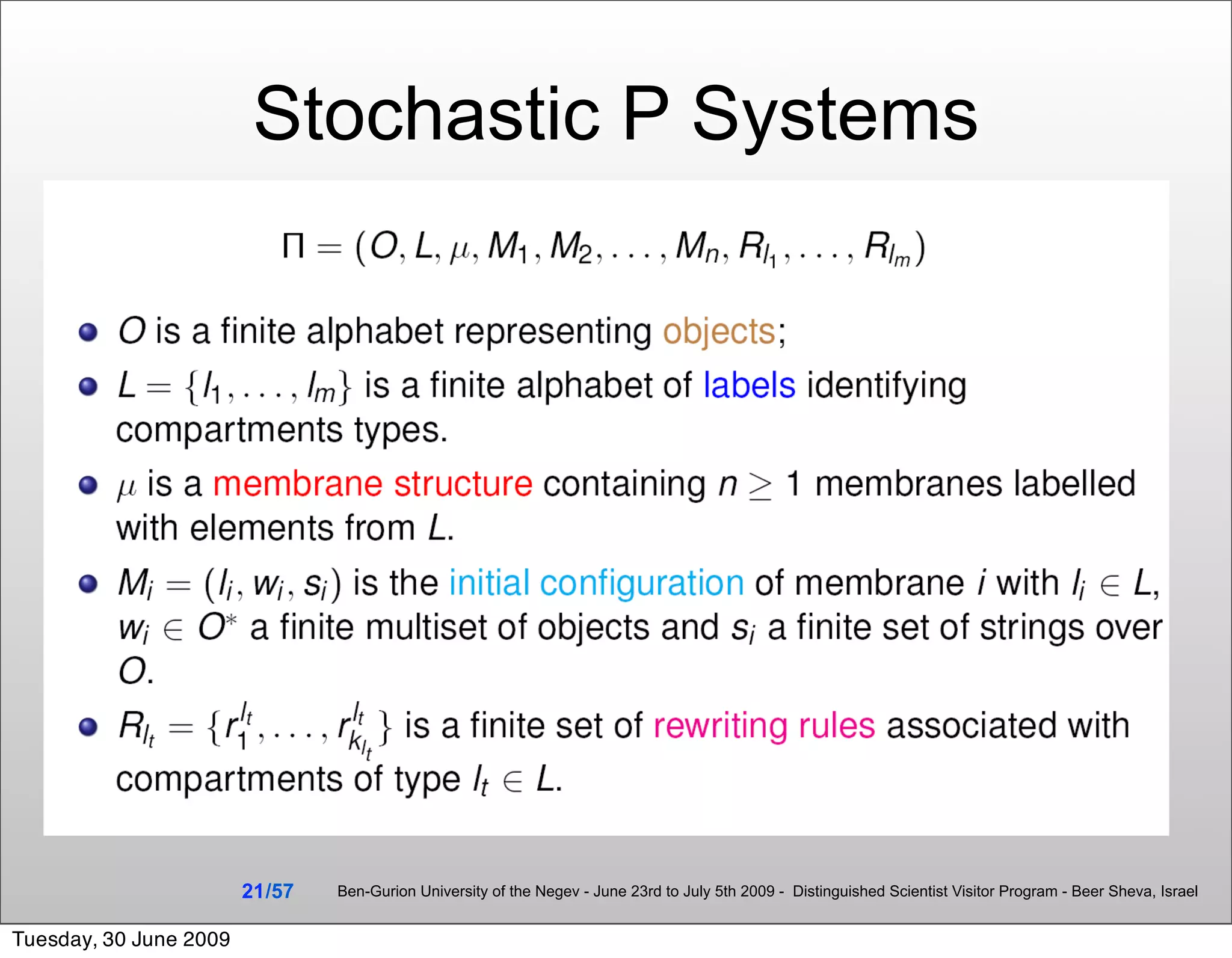
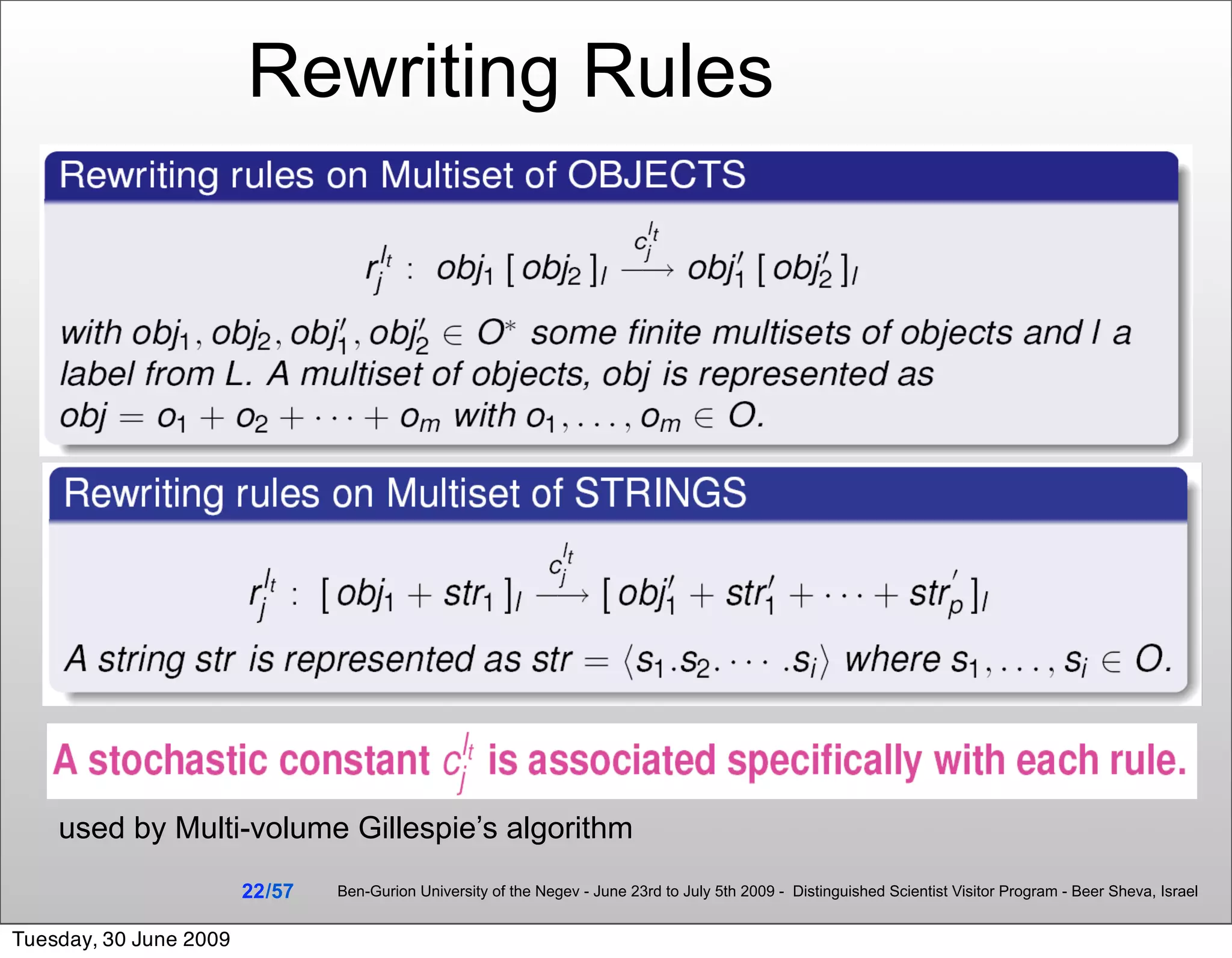
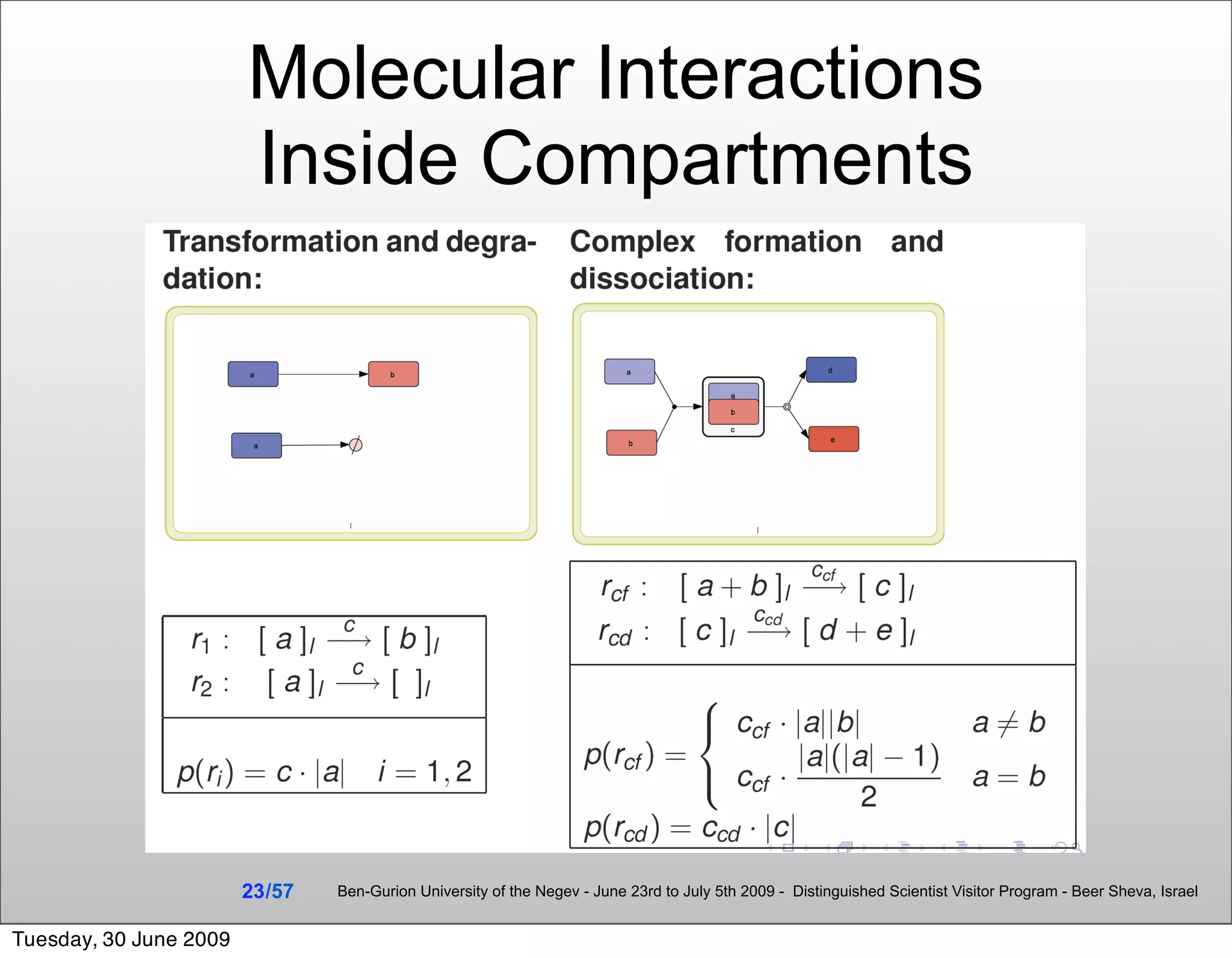
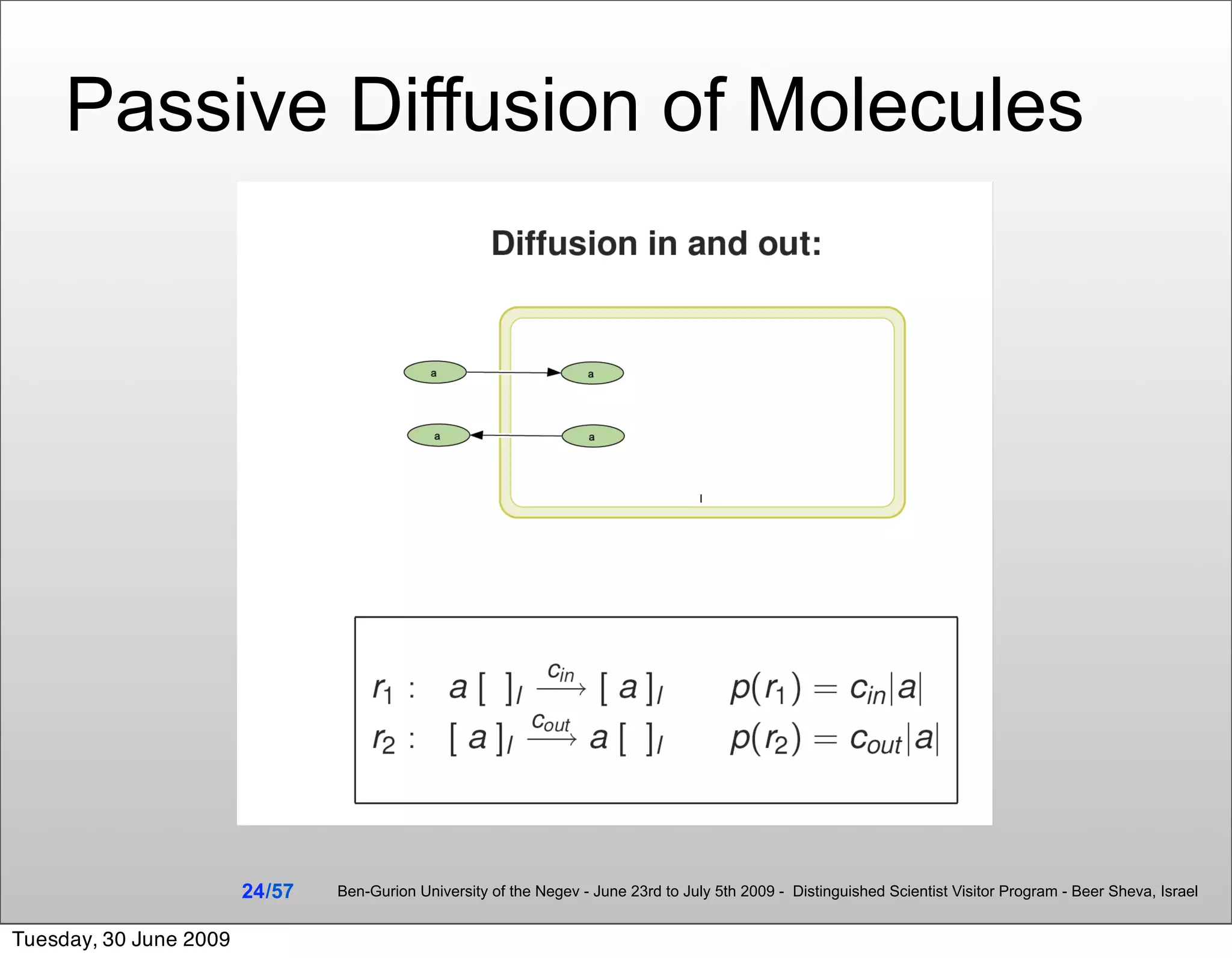
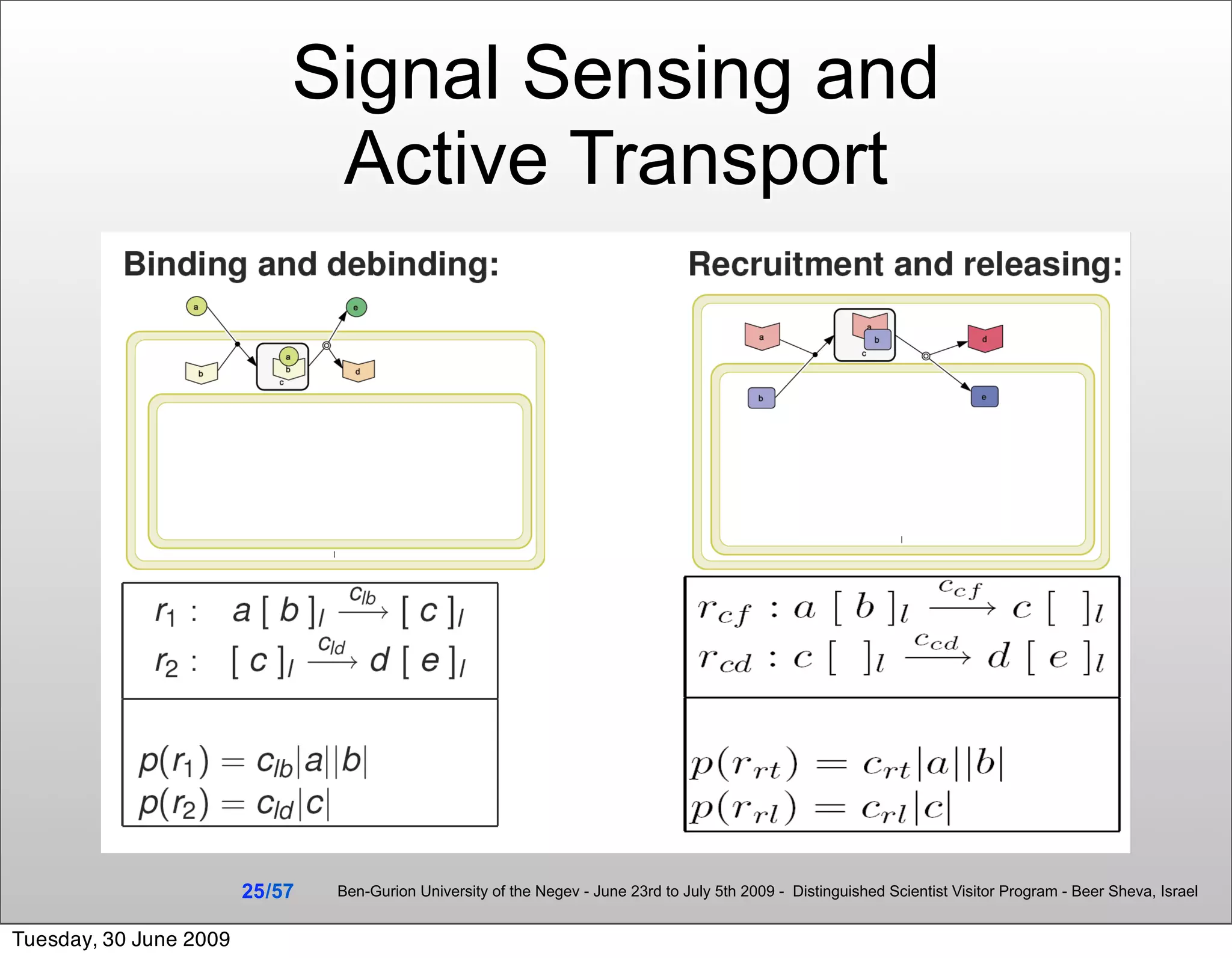

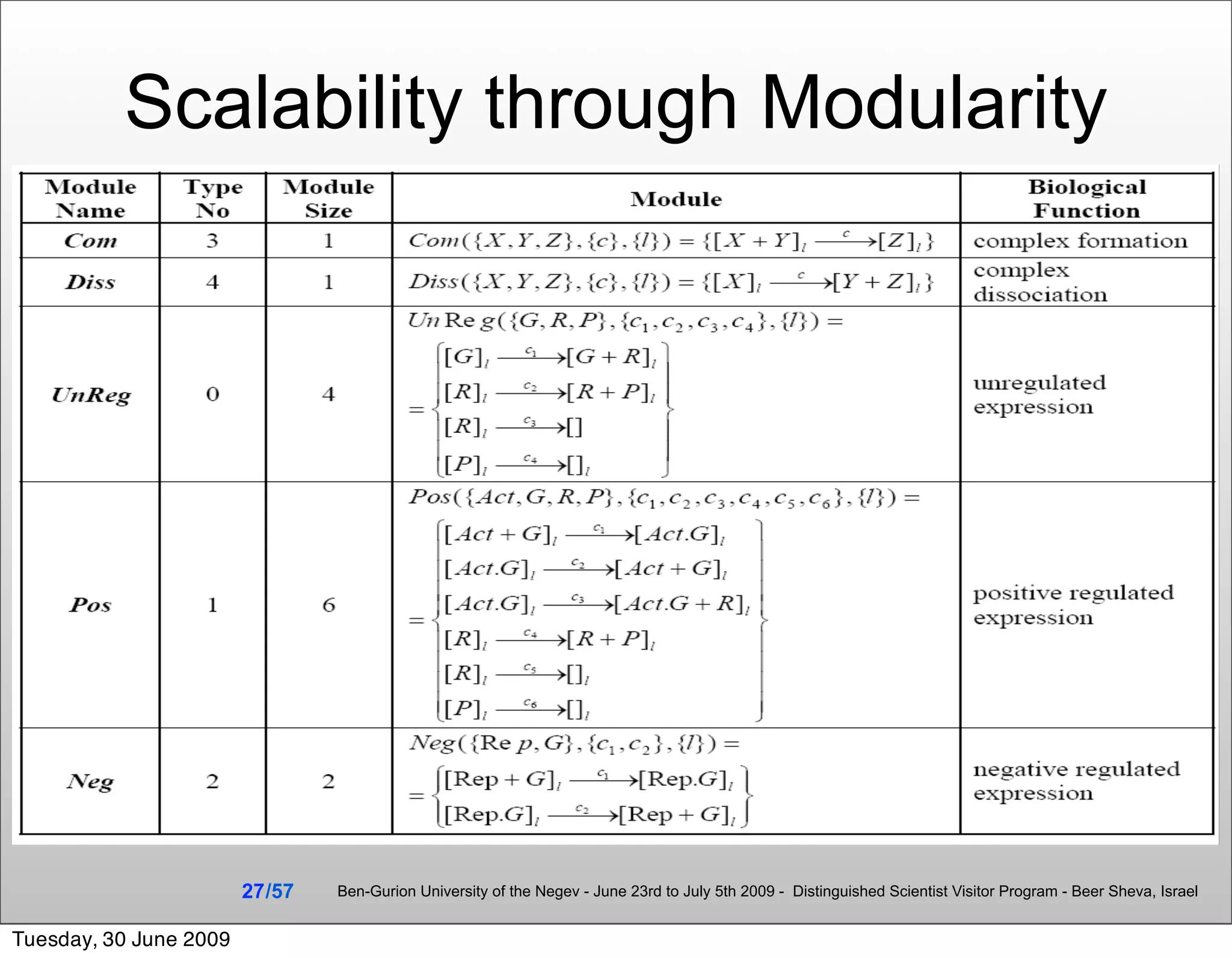
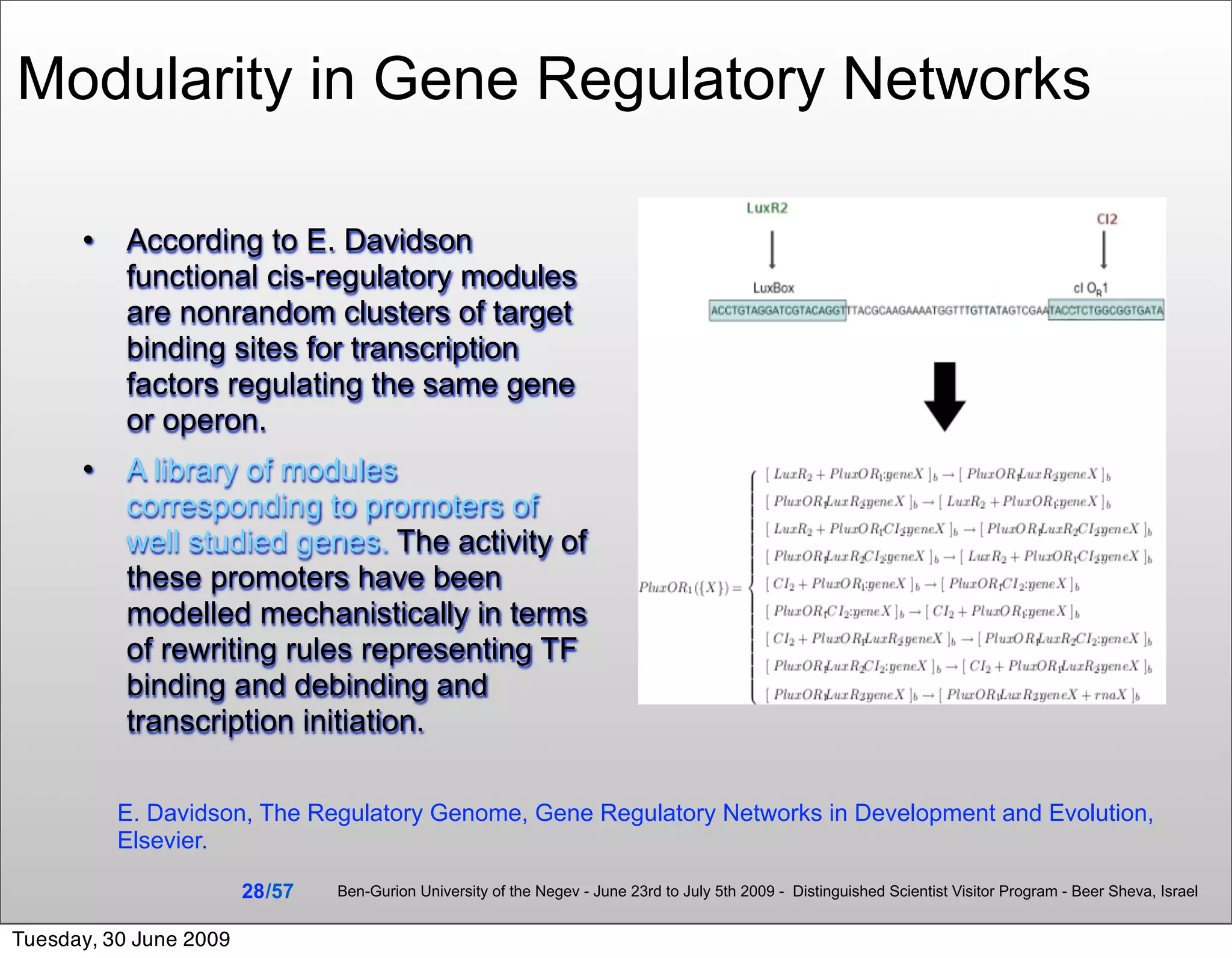
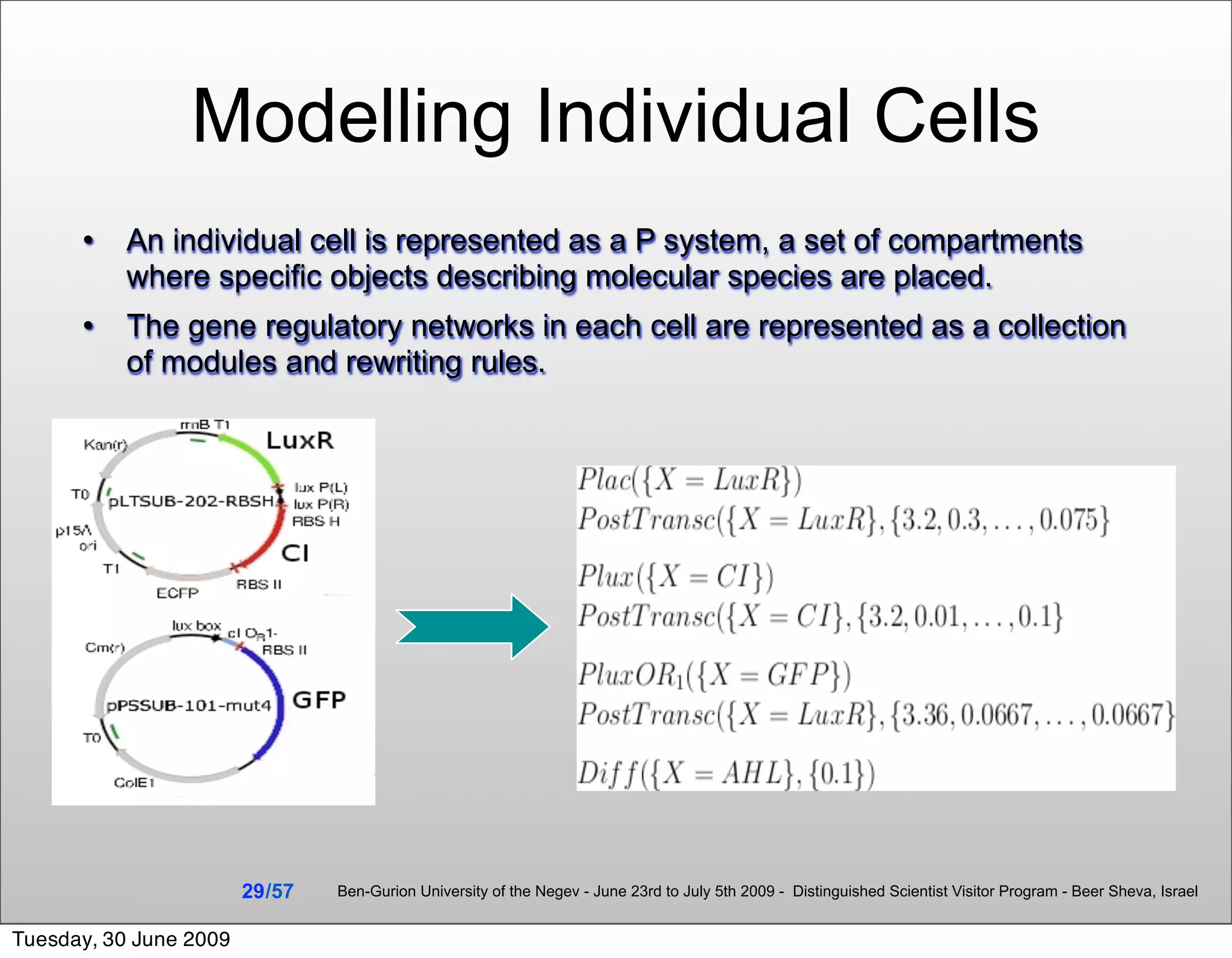
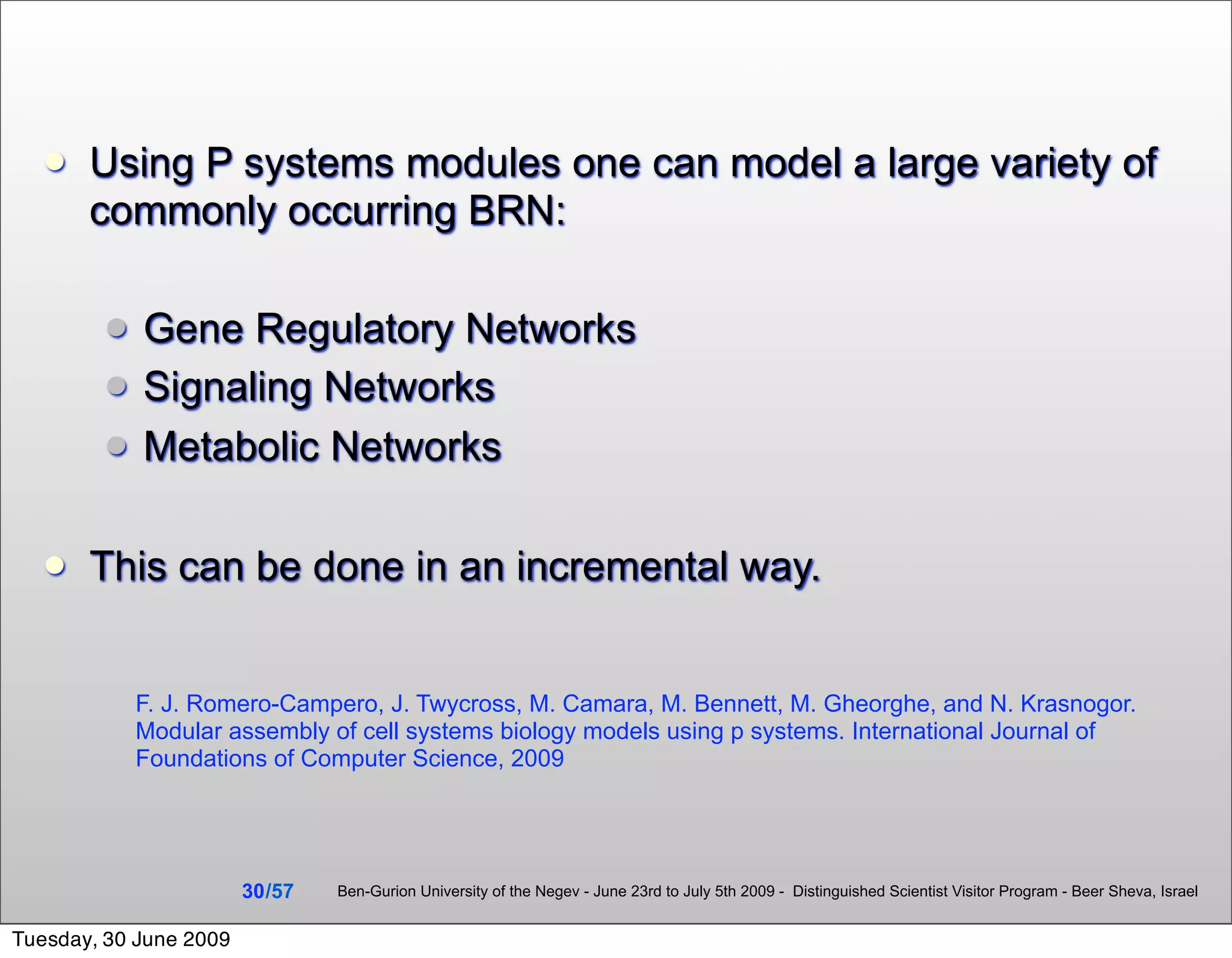
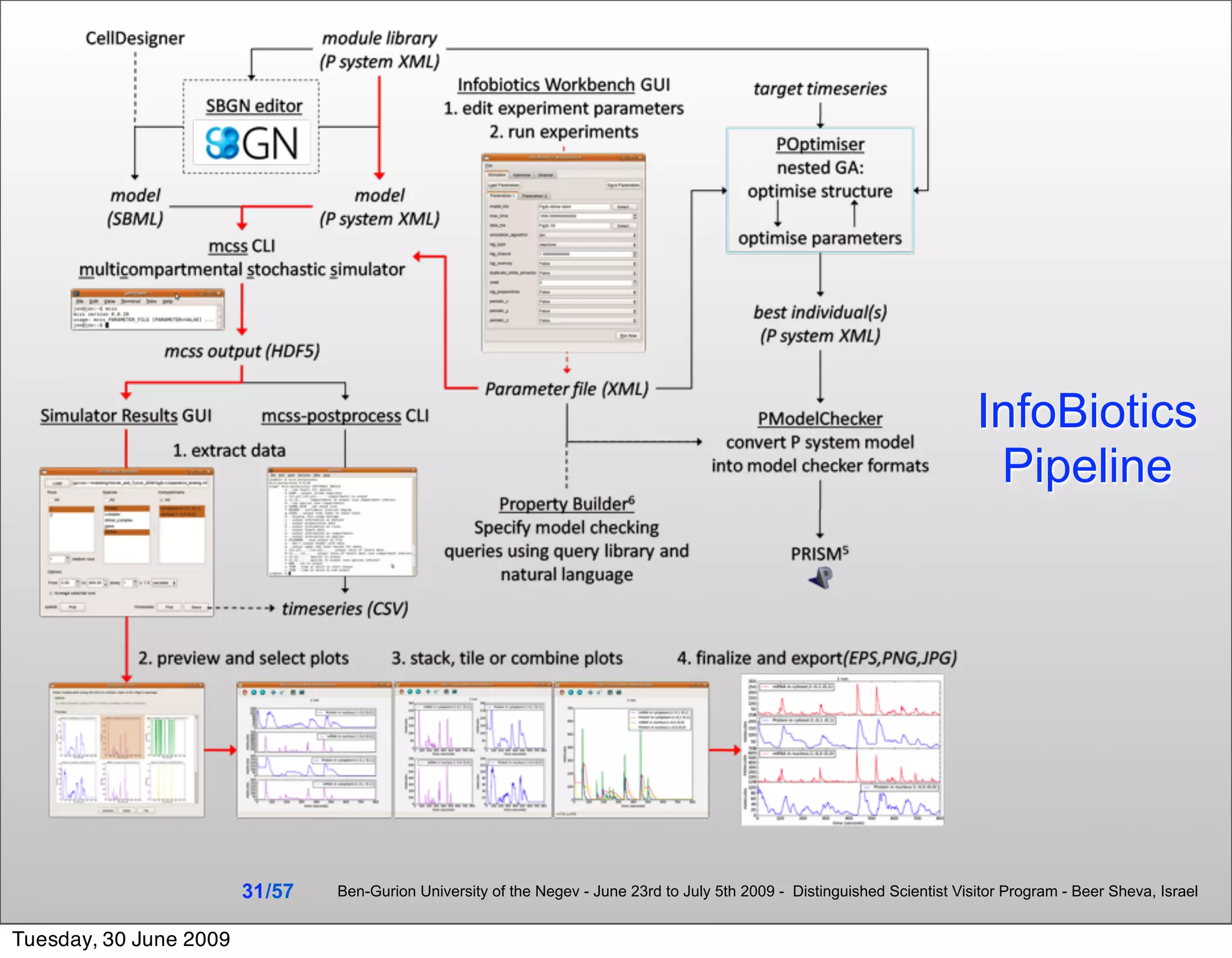

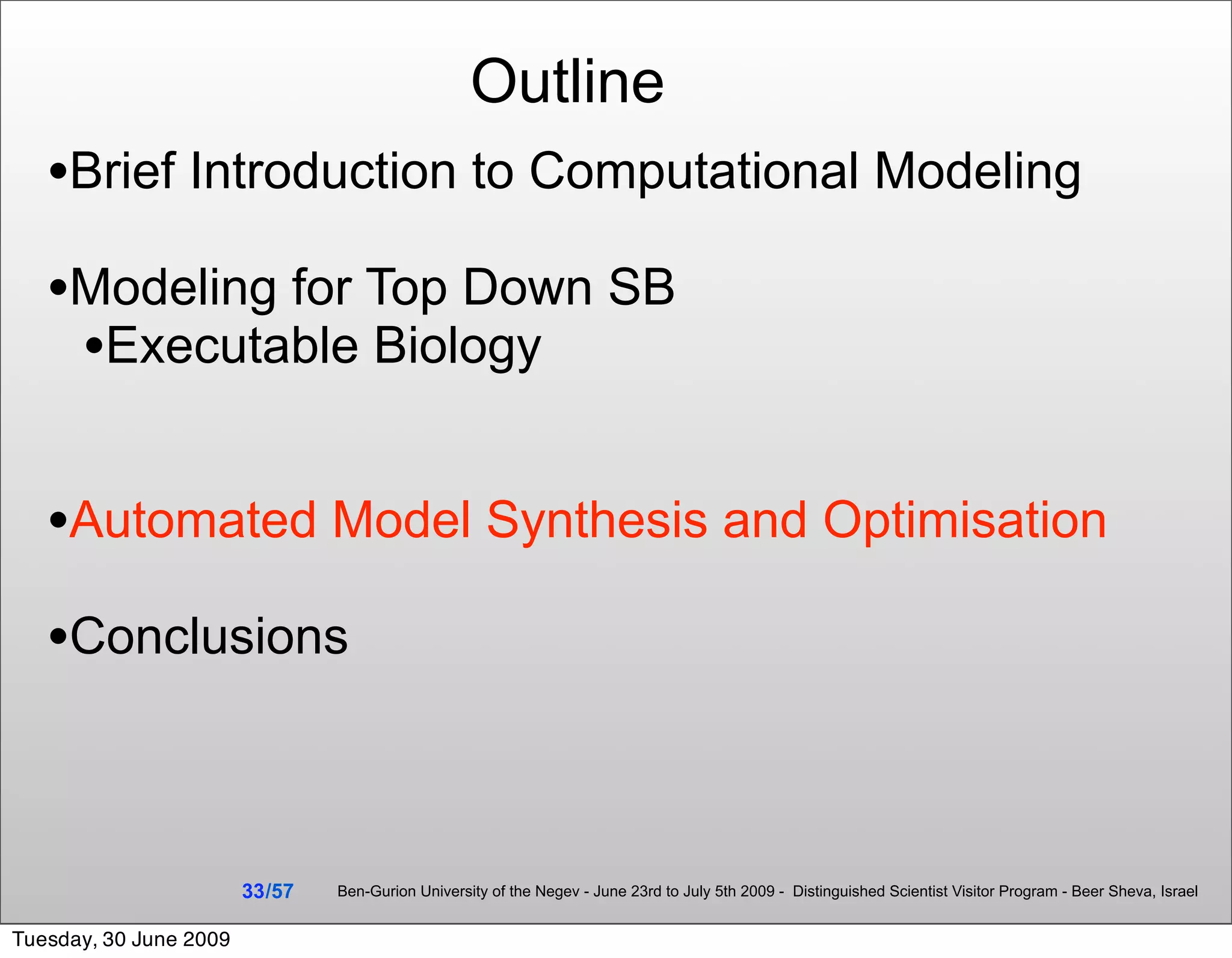
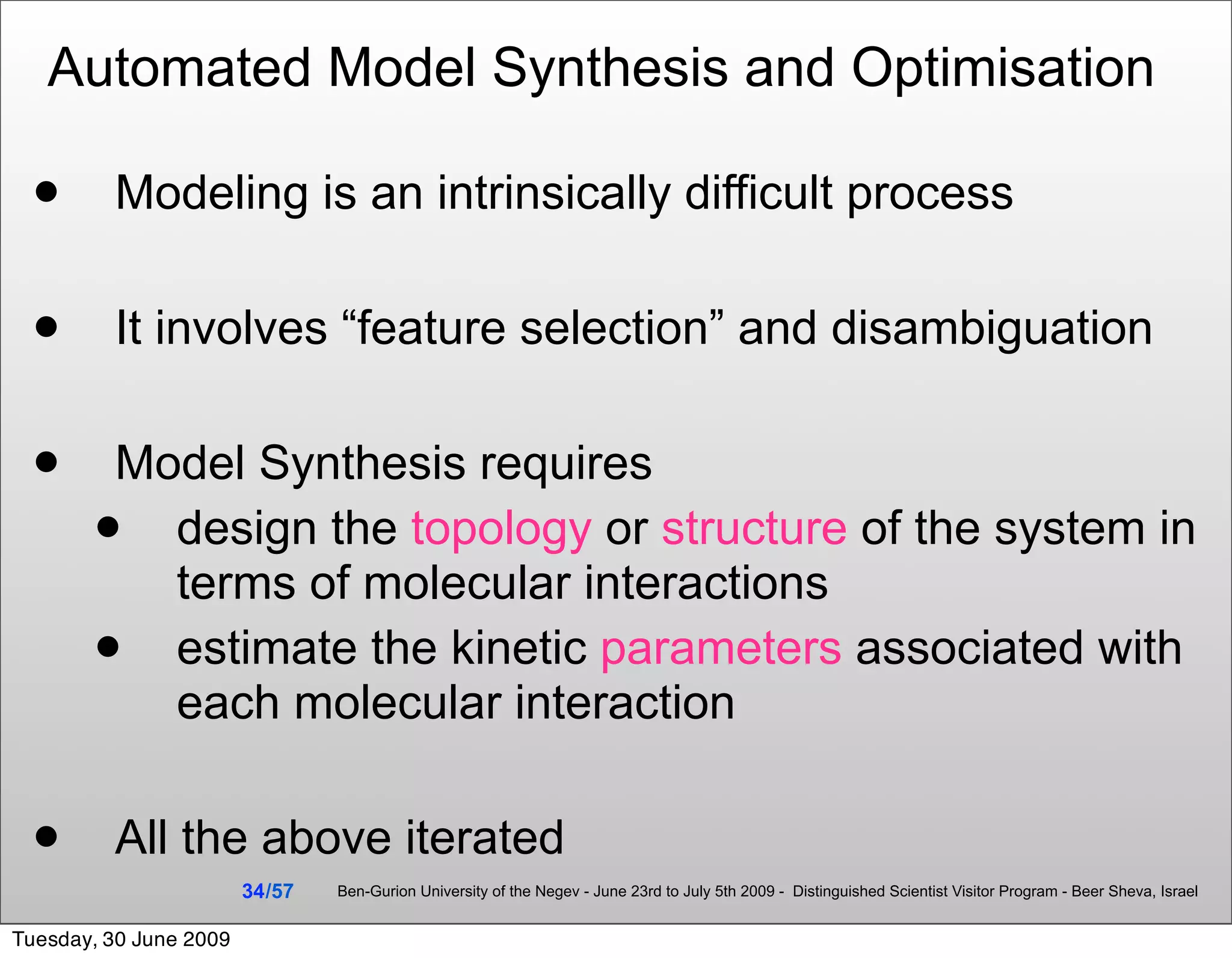
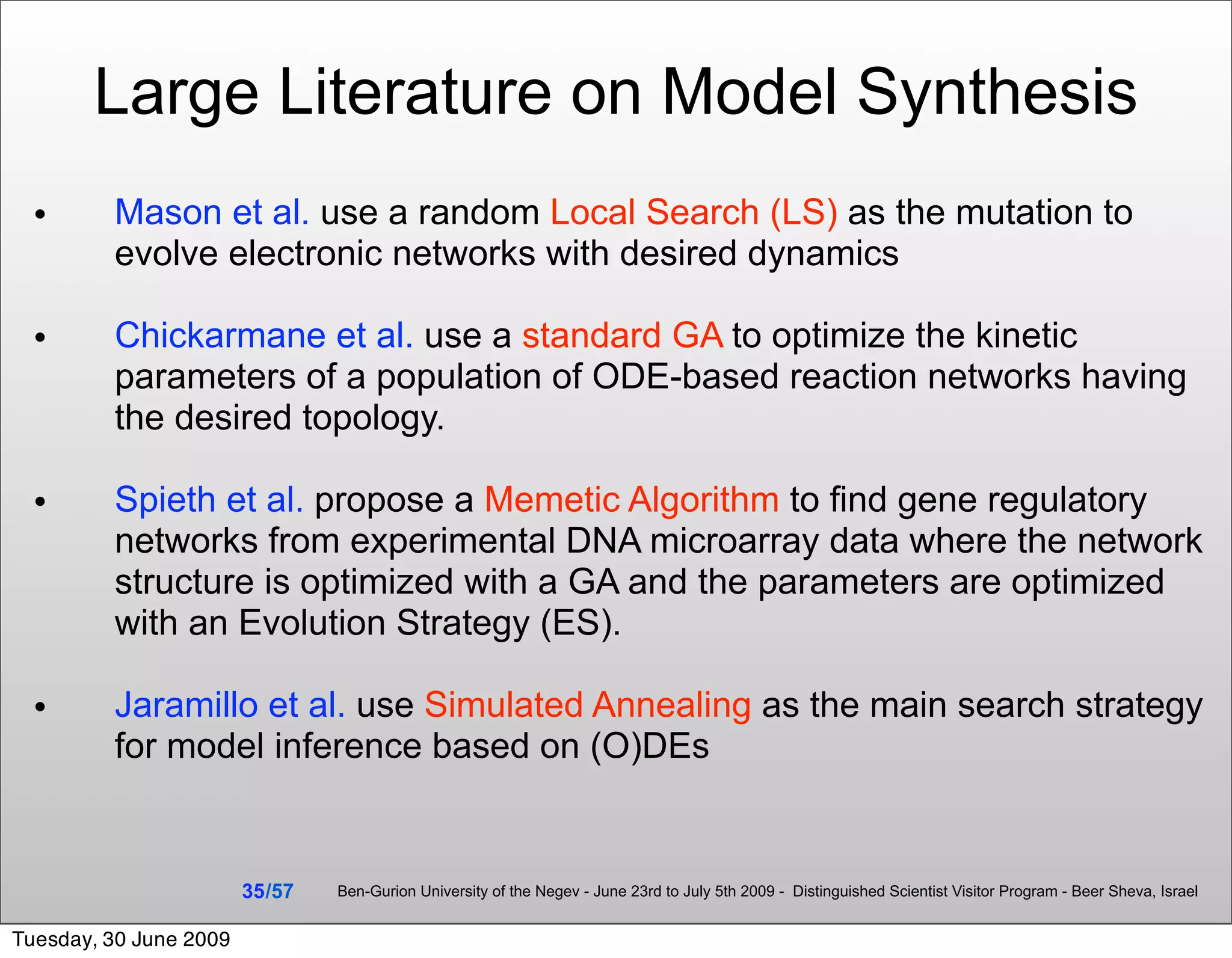
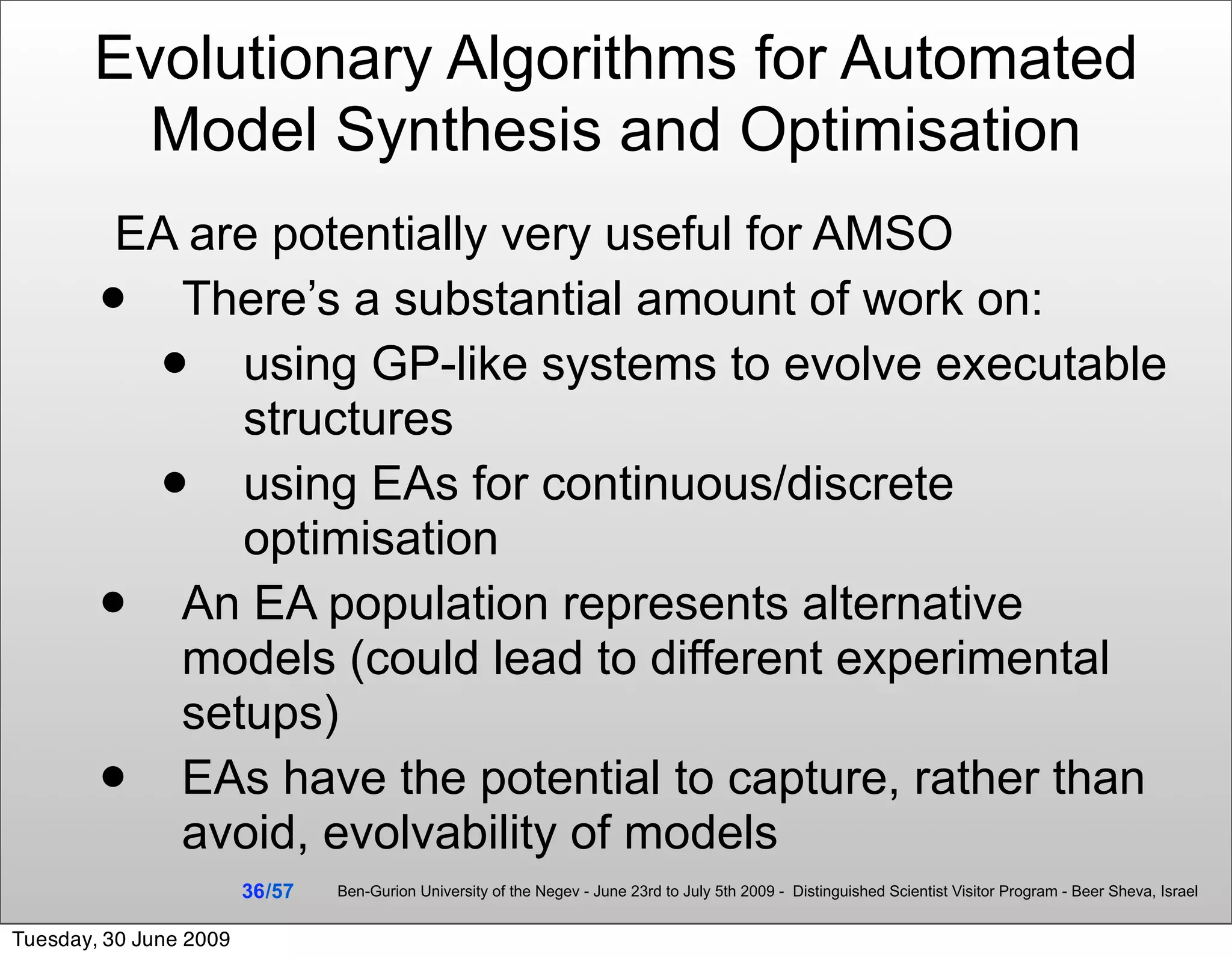
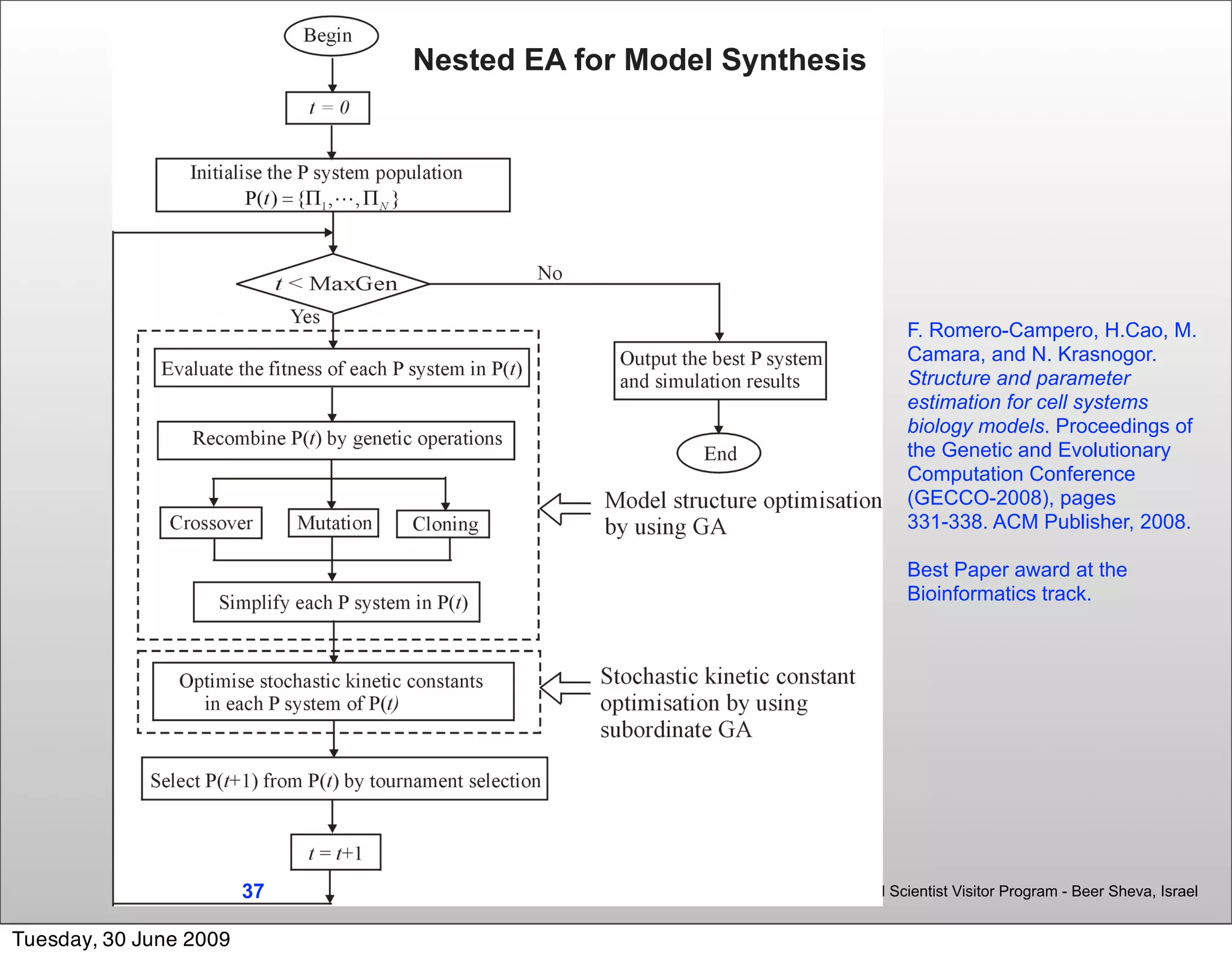
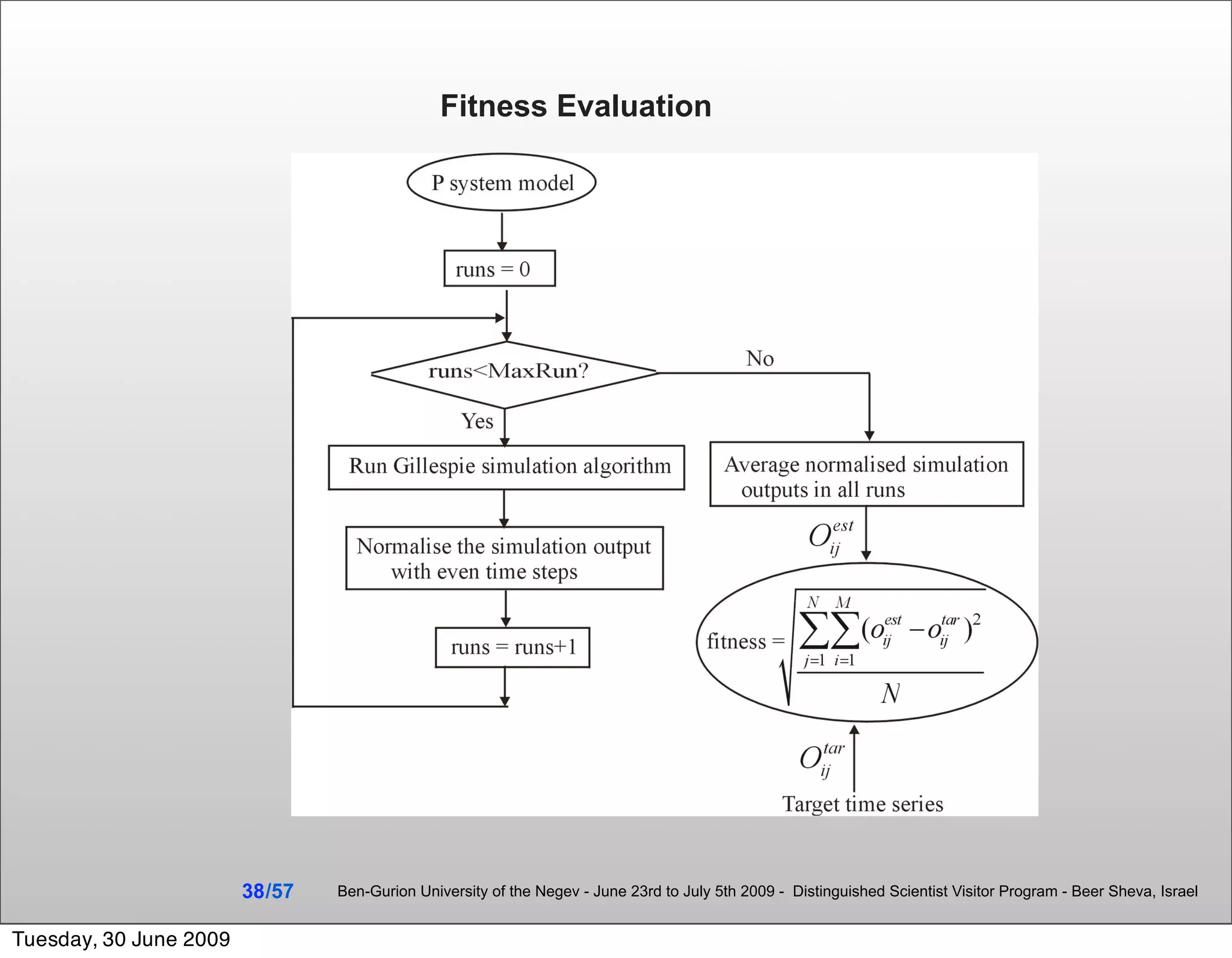
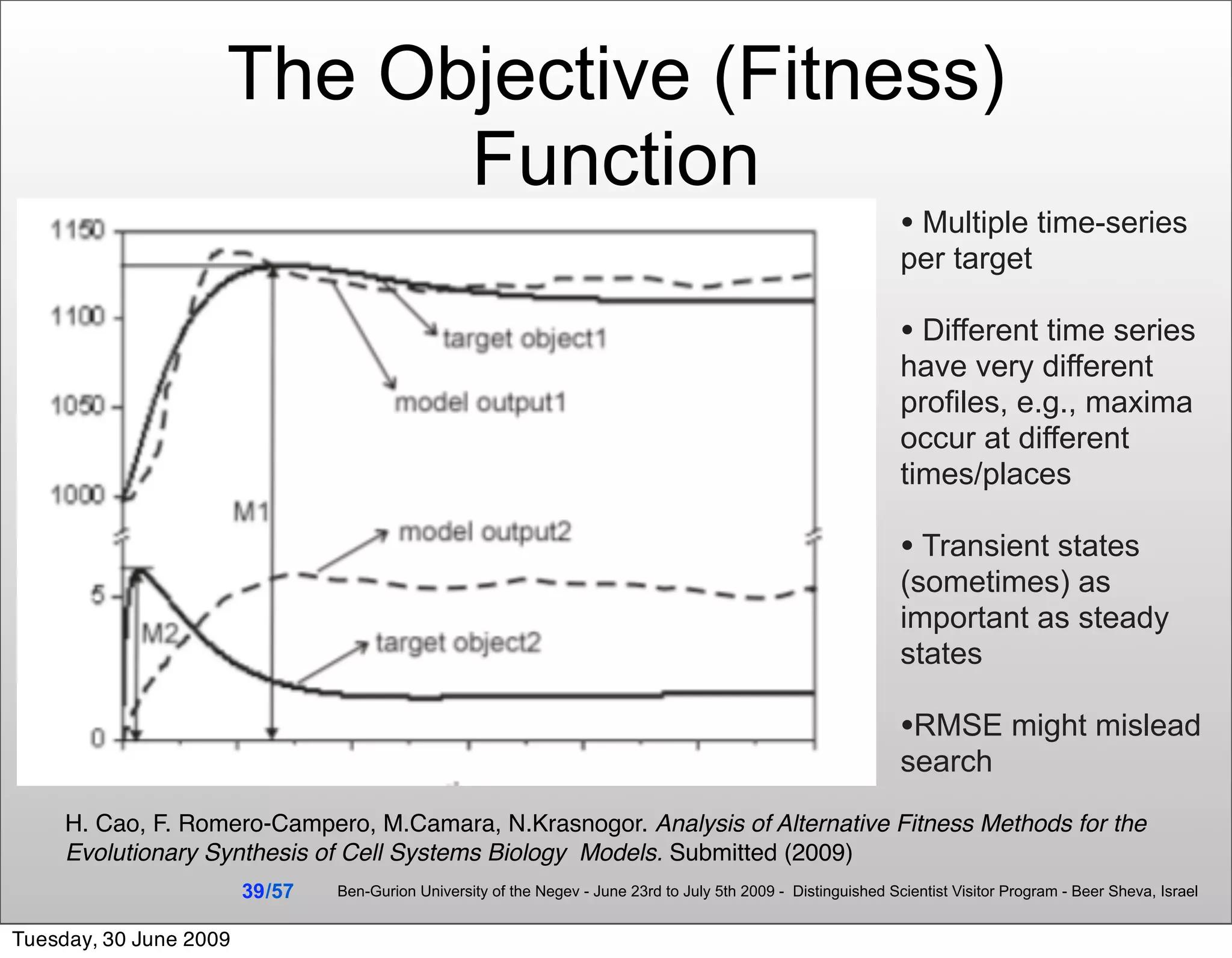


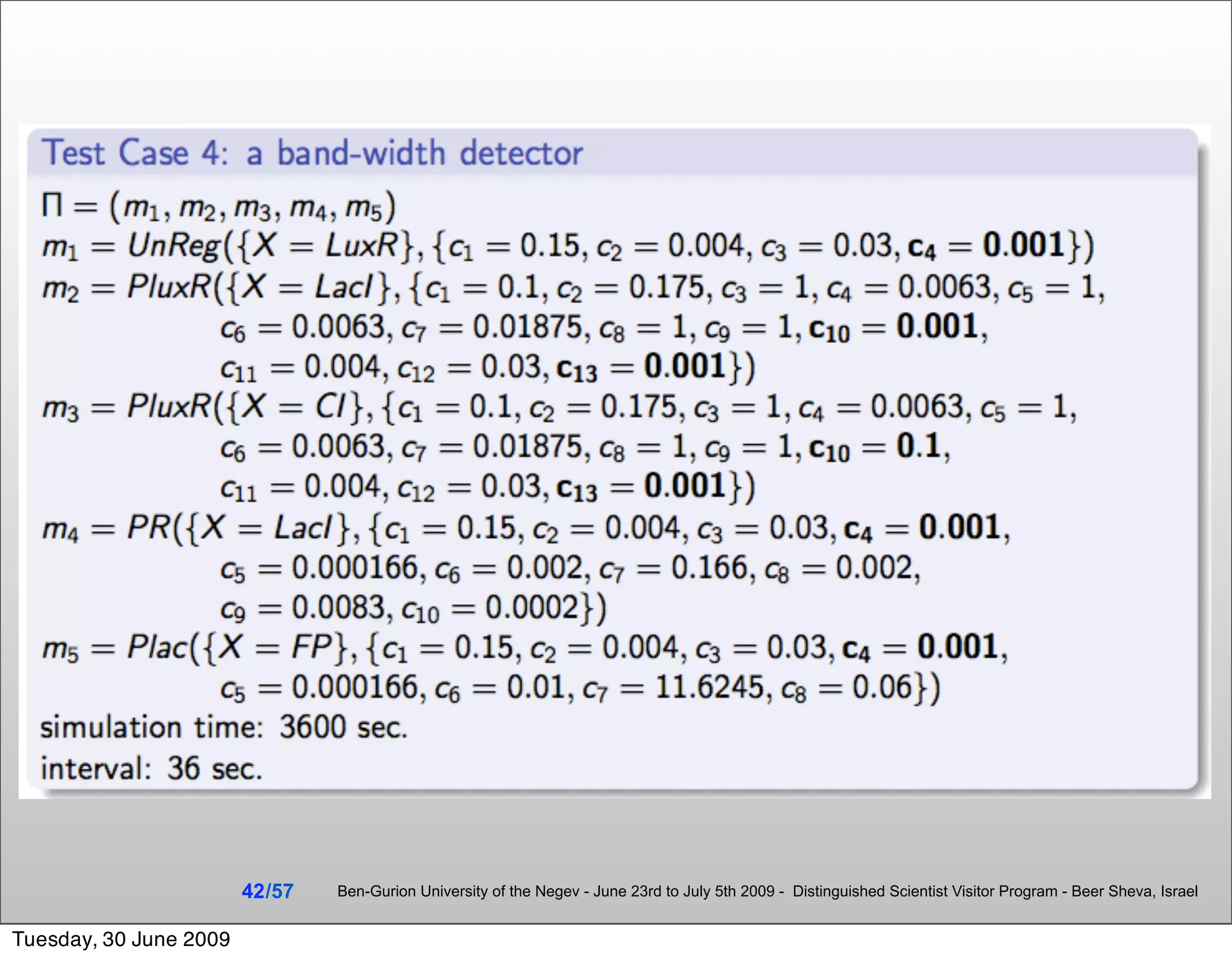
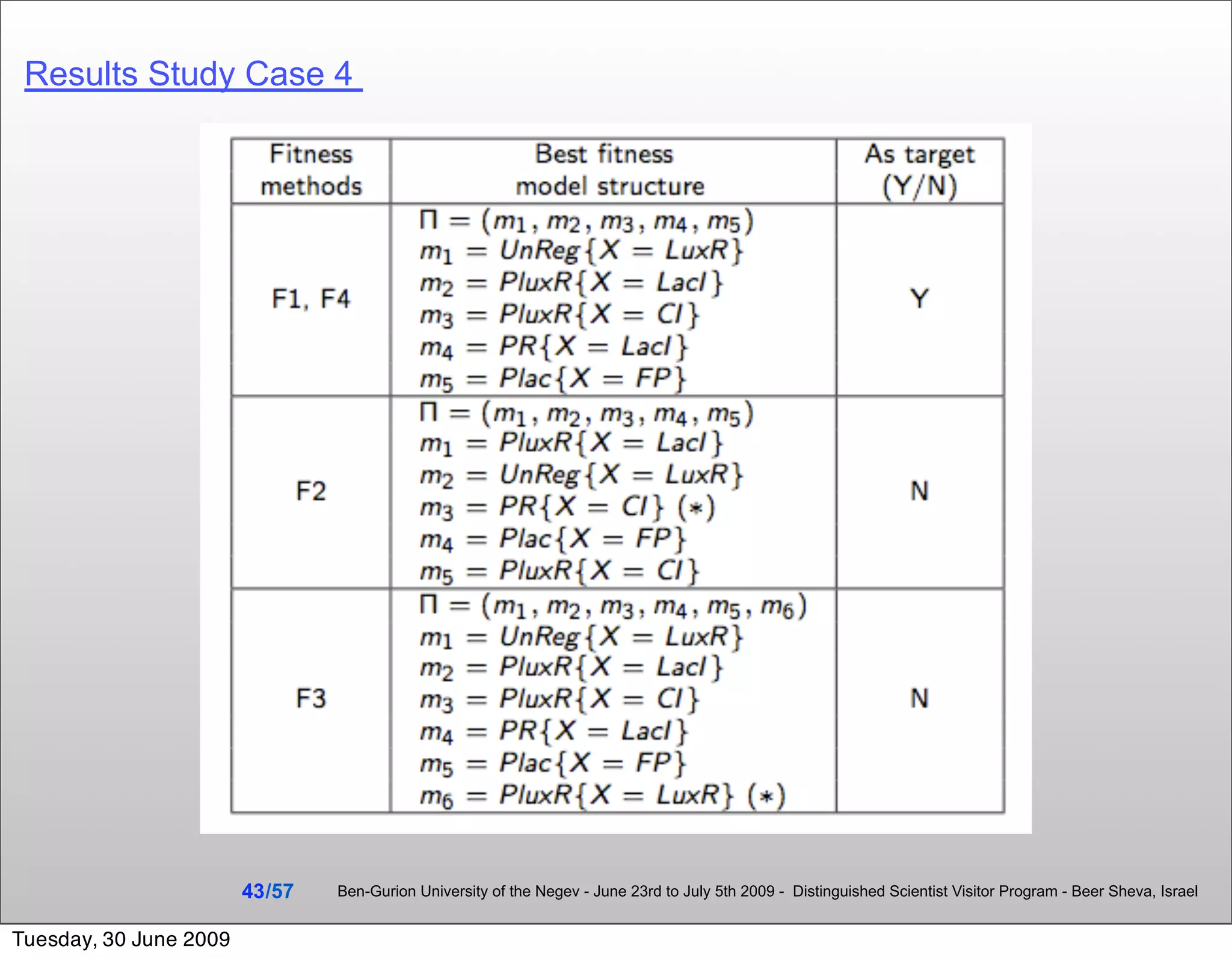
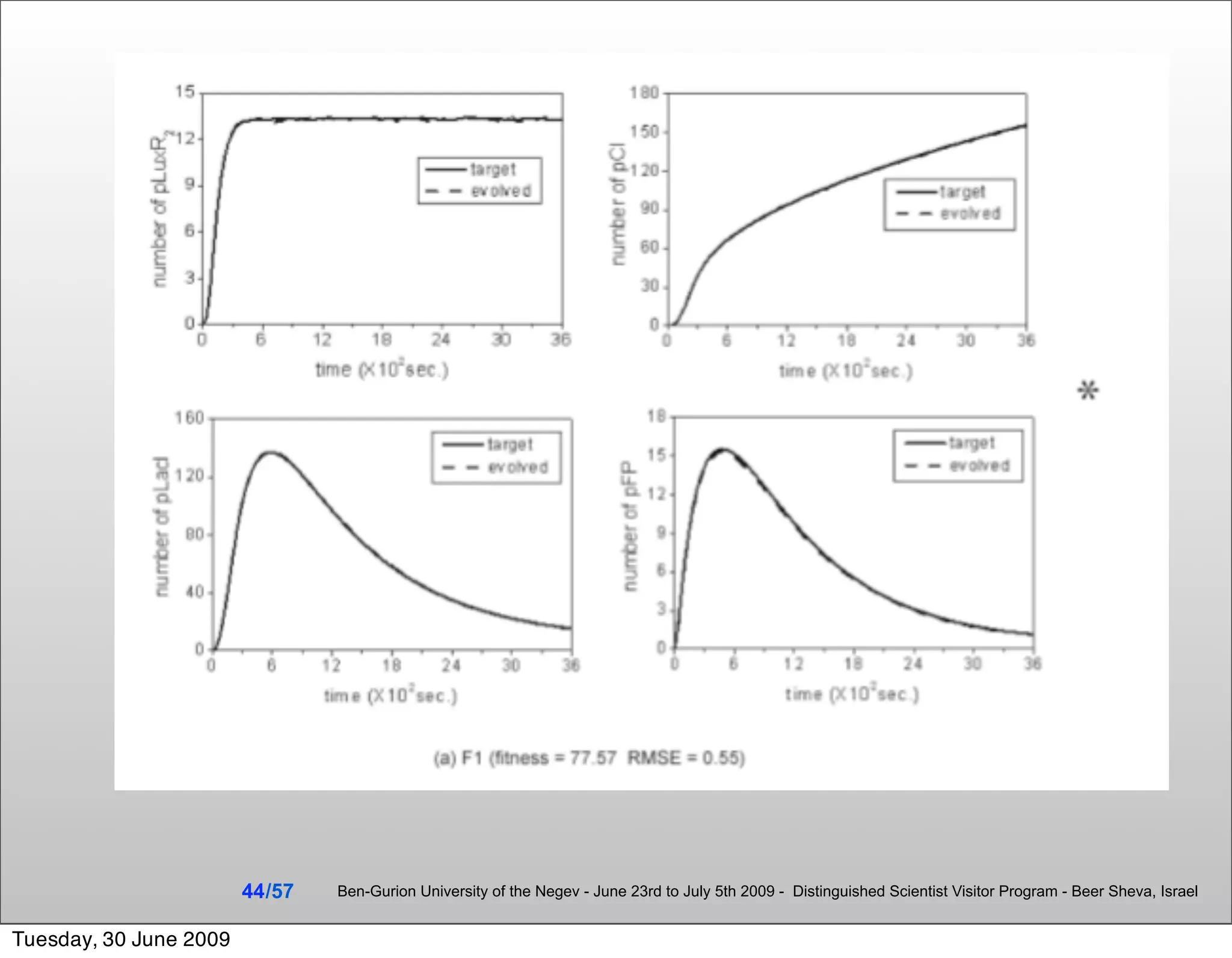
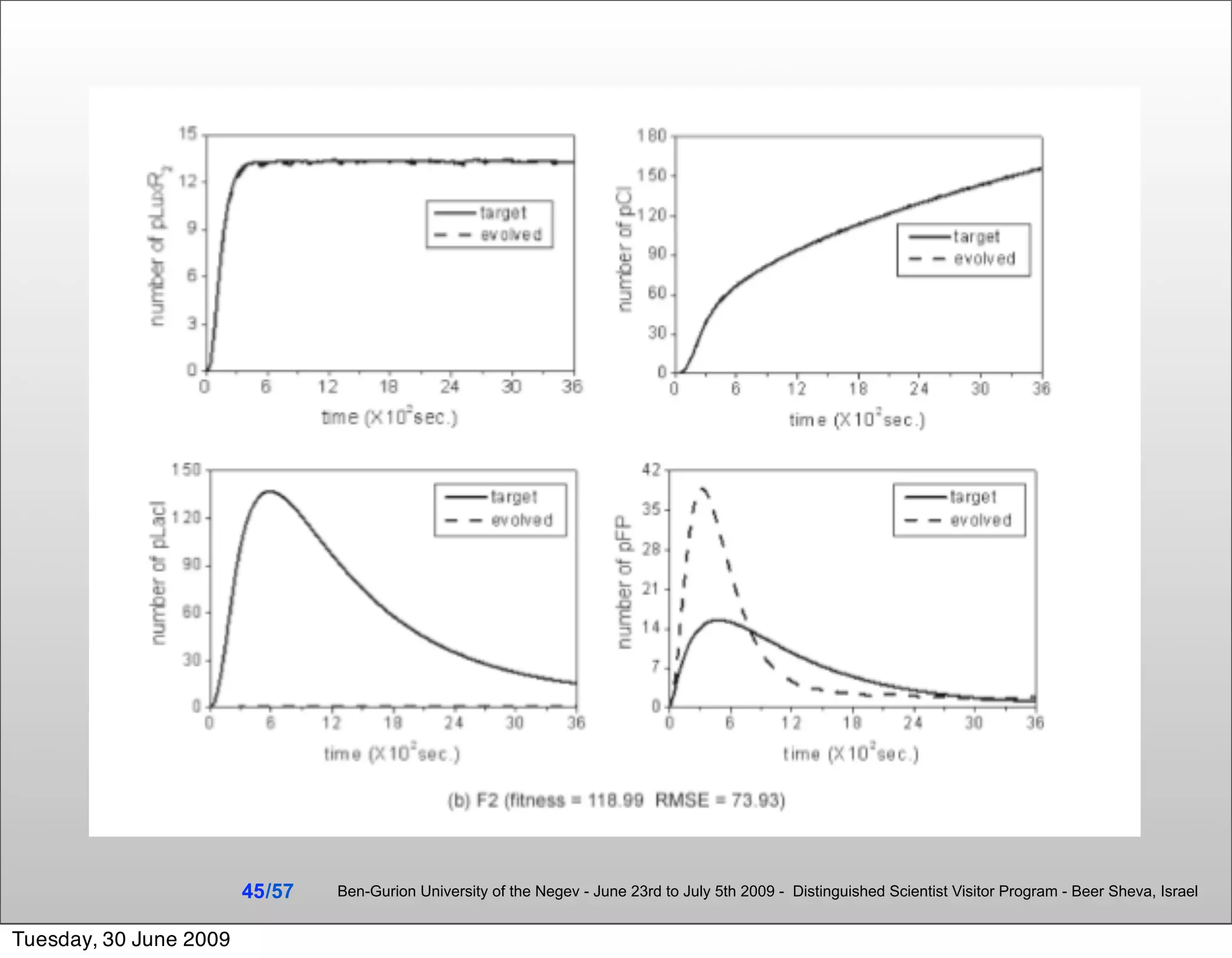

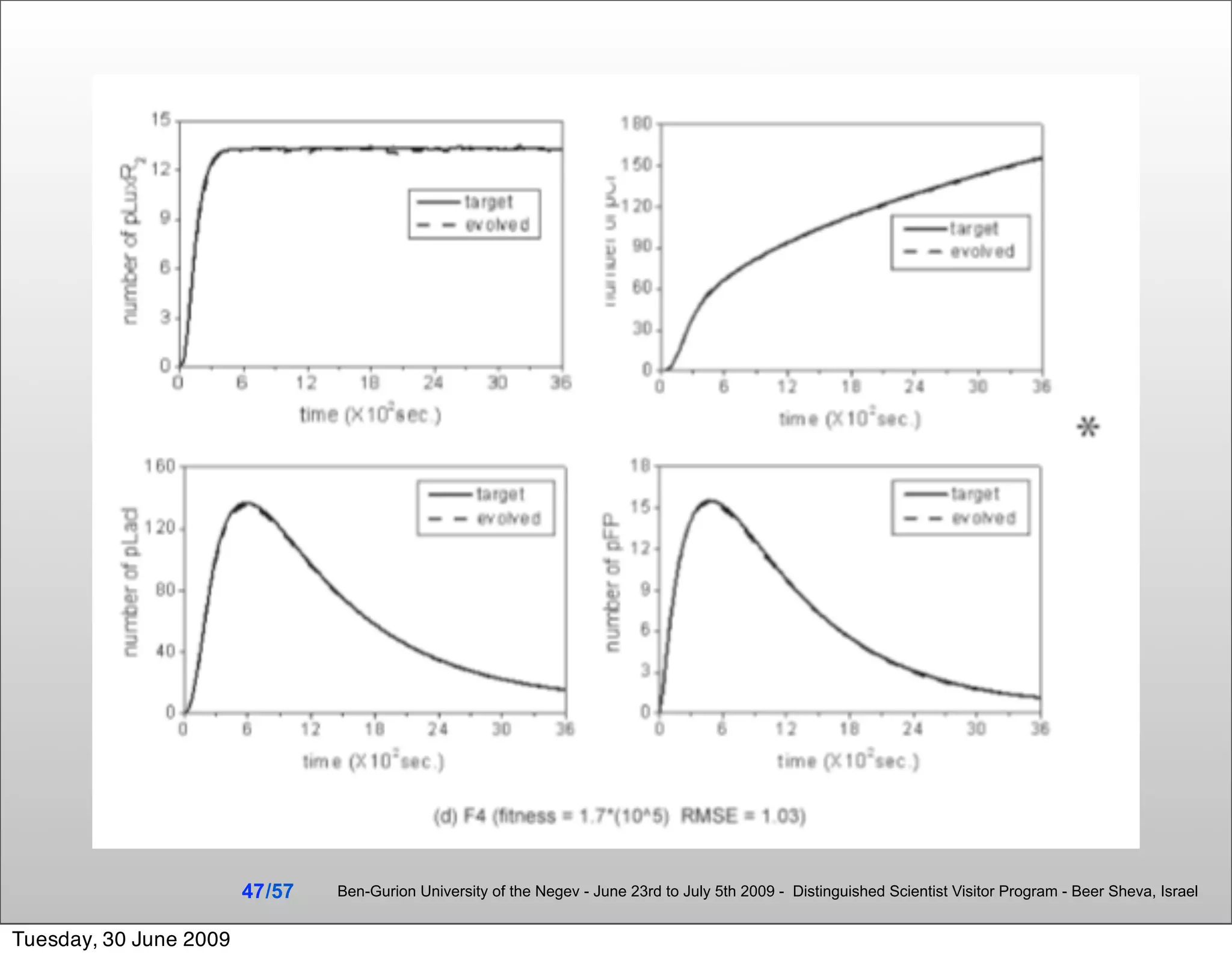
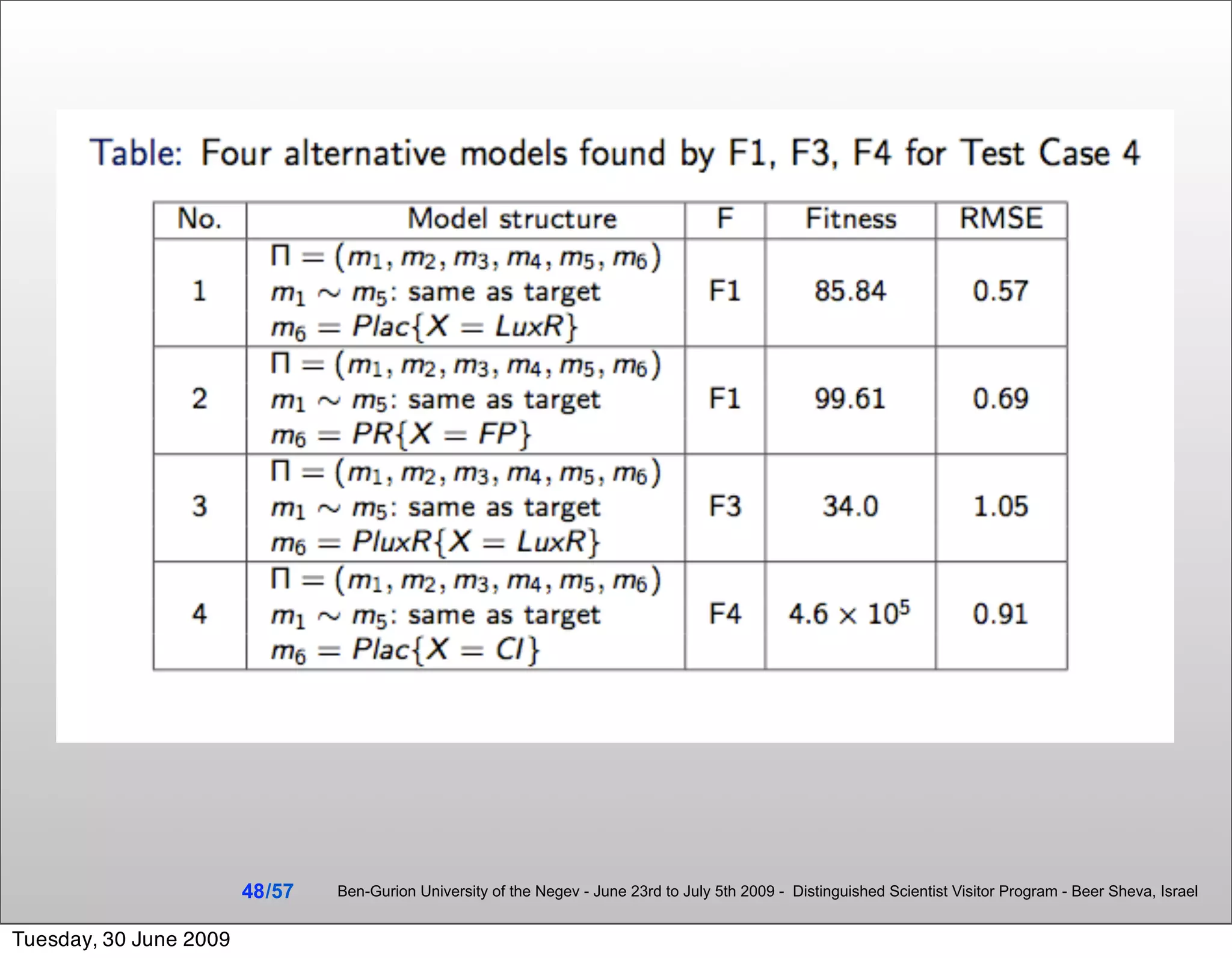
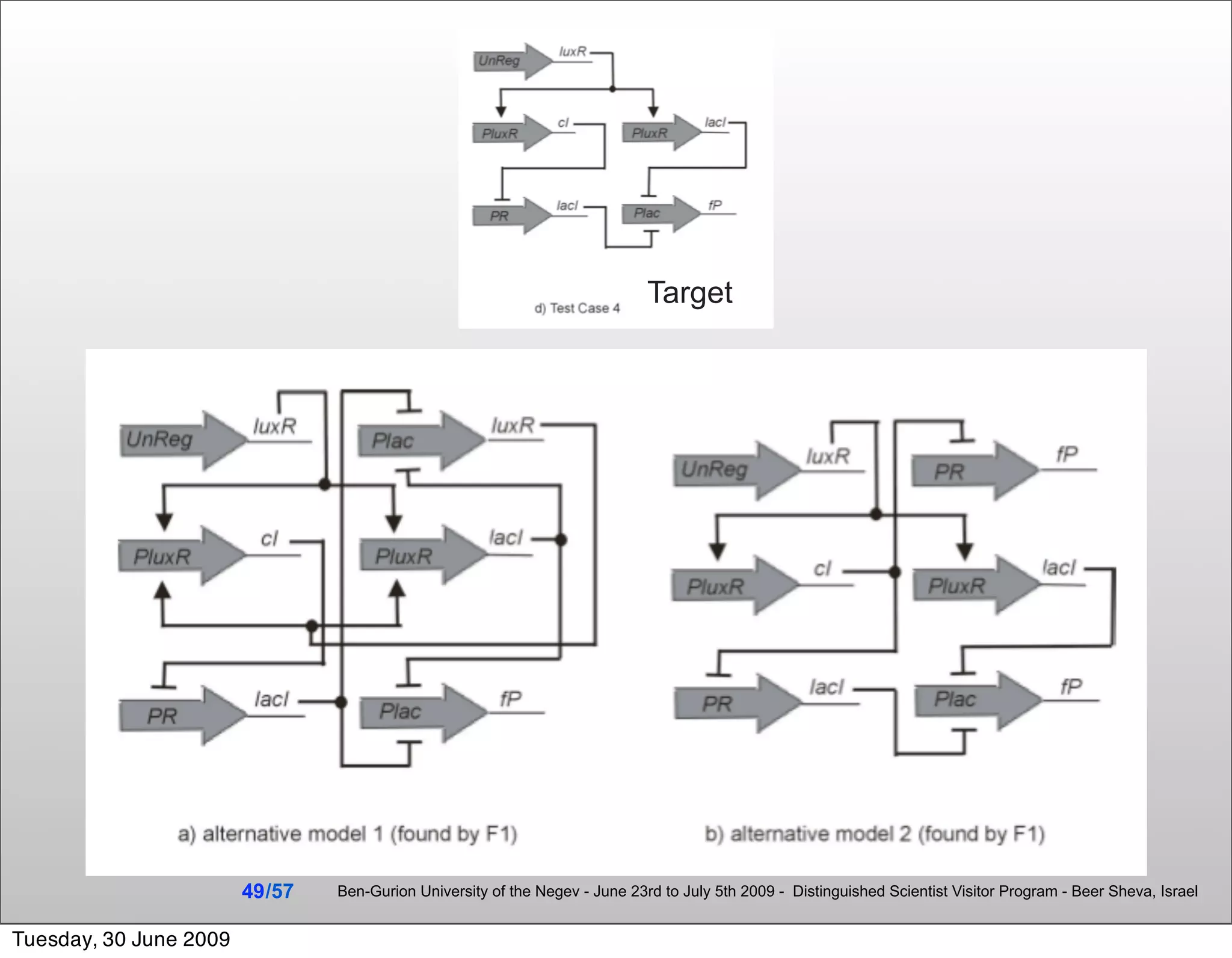
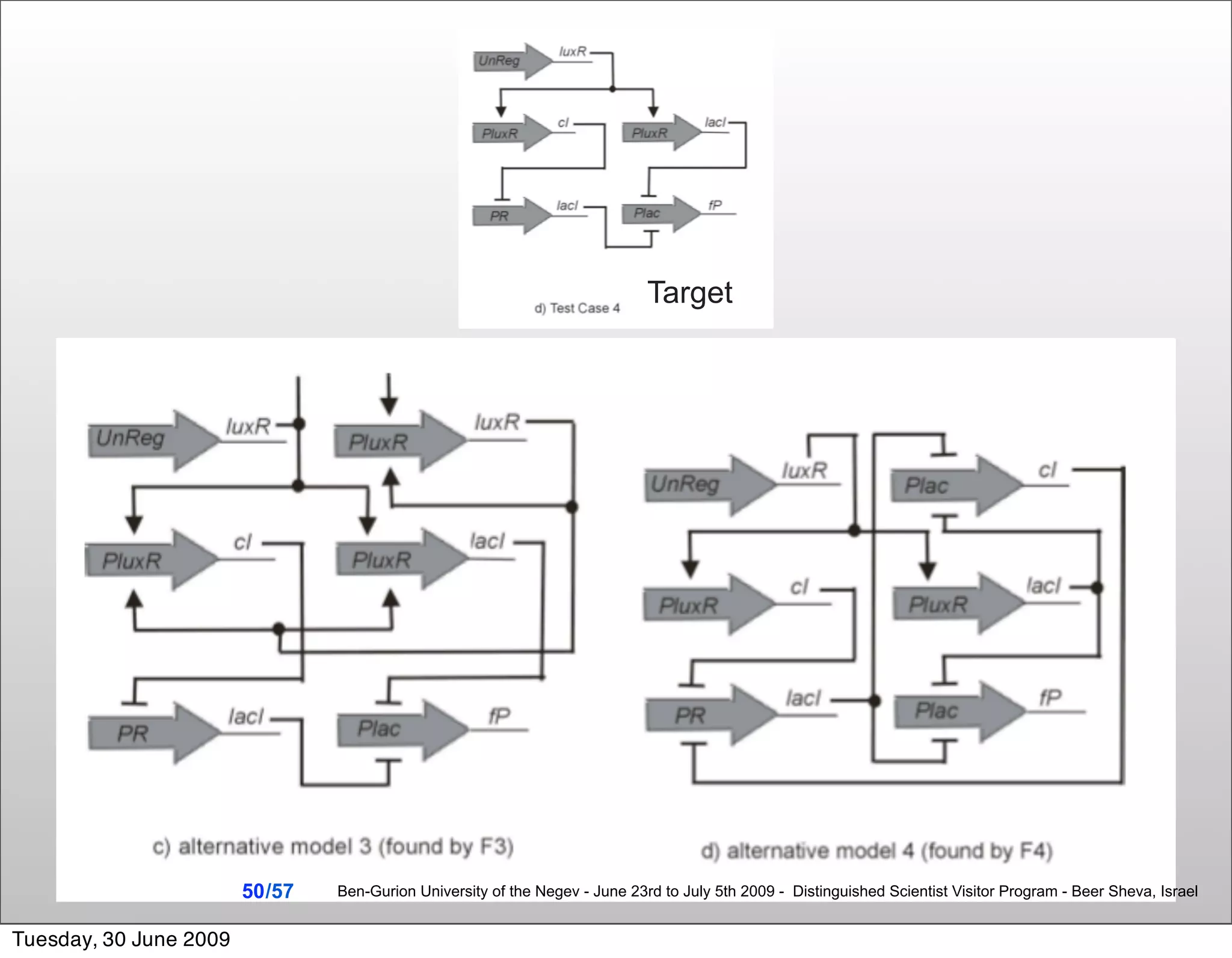
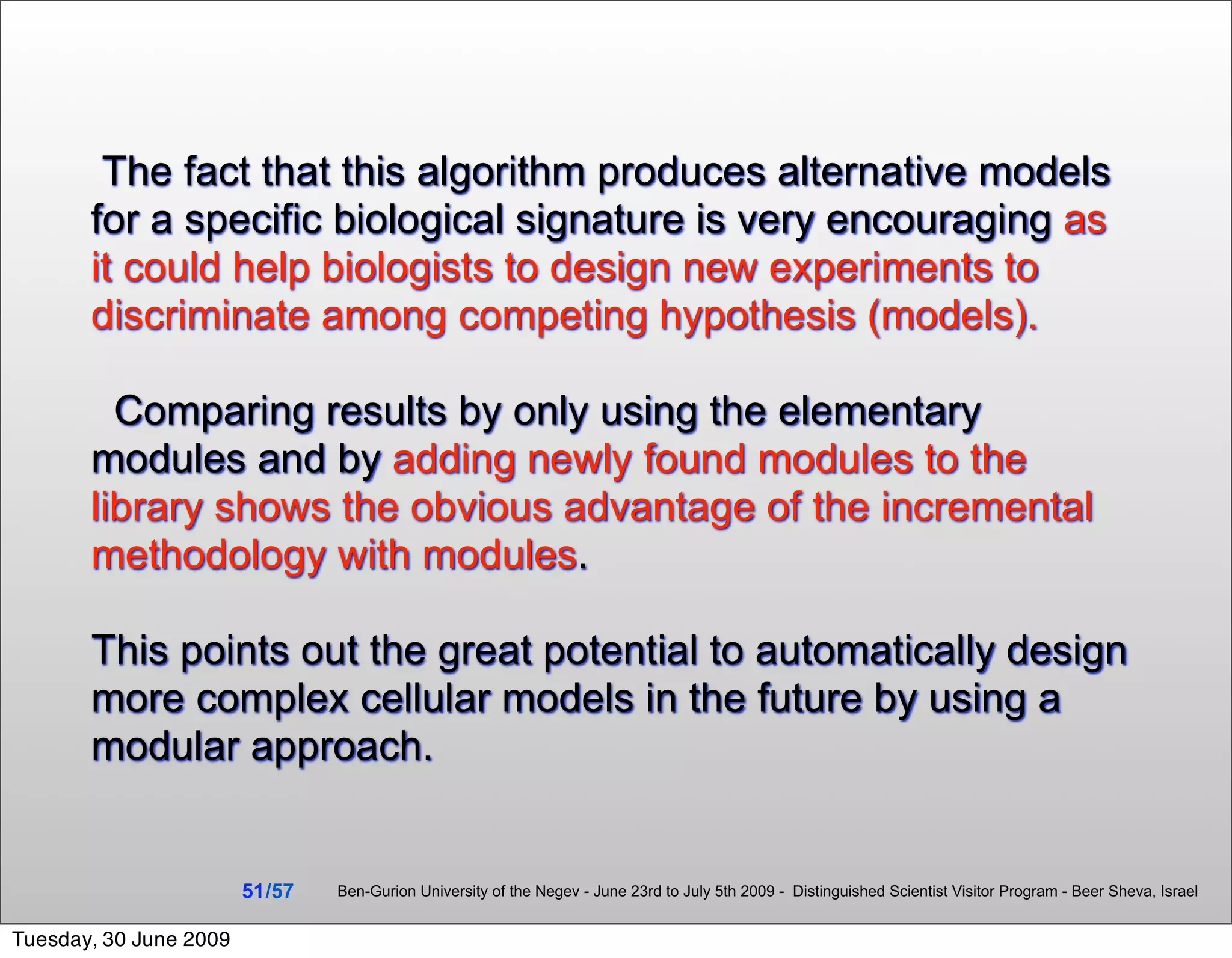
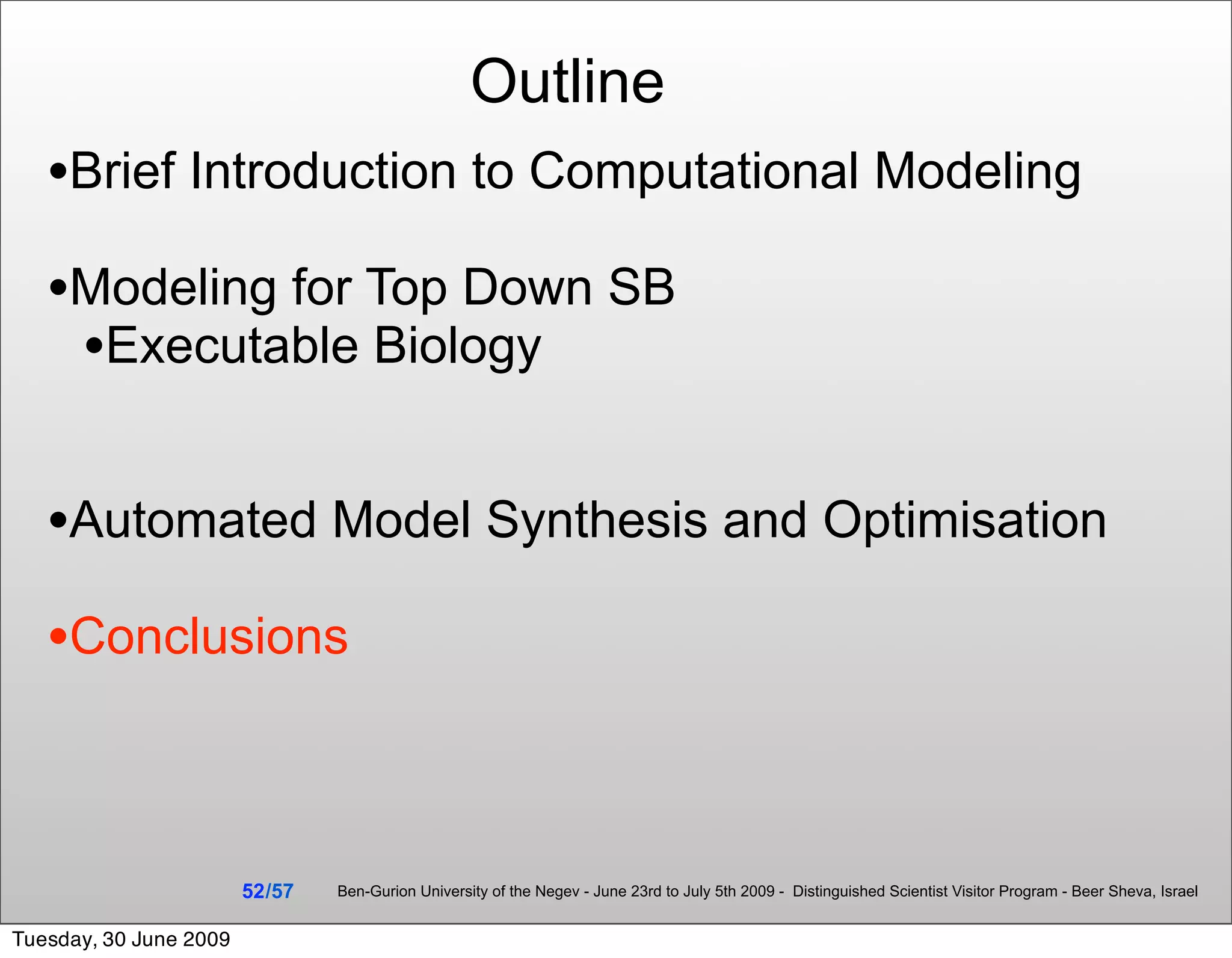
![Summary & Conclusions
This talk has focused on an integrative methodology,
InfoBiotics, for Systems & Synthetic Biology
Executable Biology
Parameter and Model Structure Discovery
Model Checking
Computational models (or executable in Fisher &
Henzinger’s jargon) adhere to (a degree) to an operational
semantics.
Refer to the excellent review [Fisher & Henzinger, Nature
Biotechnology, 2007]
53 /57 Ben-Gurion University of the Negev - June 23rd to July 5th 2009 - Distinguished Scientist Visitor Program - Beer Sheva, Israel
Tuesday, 30 June 2009](https://image.slidesharecdn.com/bucscolloquium-090630095157-phpapp02/75/Building-Executable-Biology-Models-for-Synthetic-Biology-53-2048.jpg)
